ANTI_FASHION
anti_fashion 2018

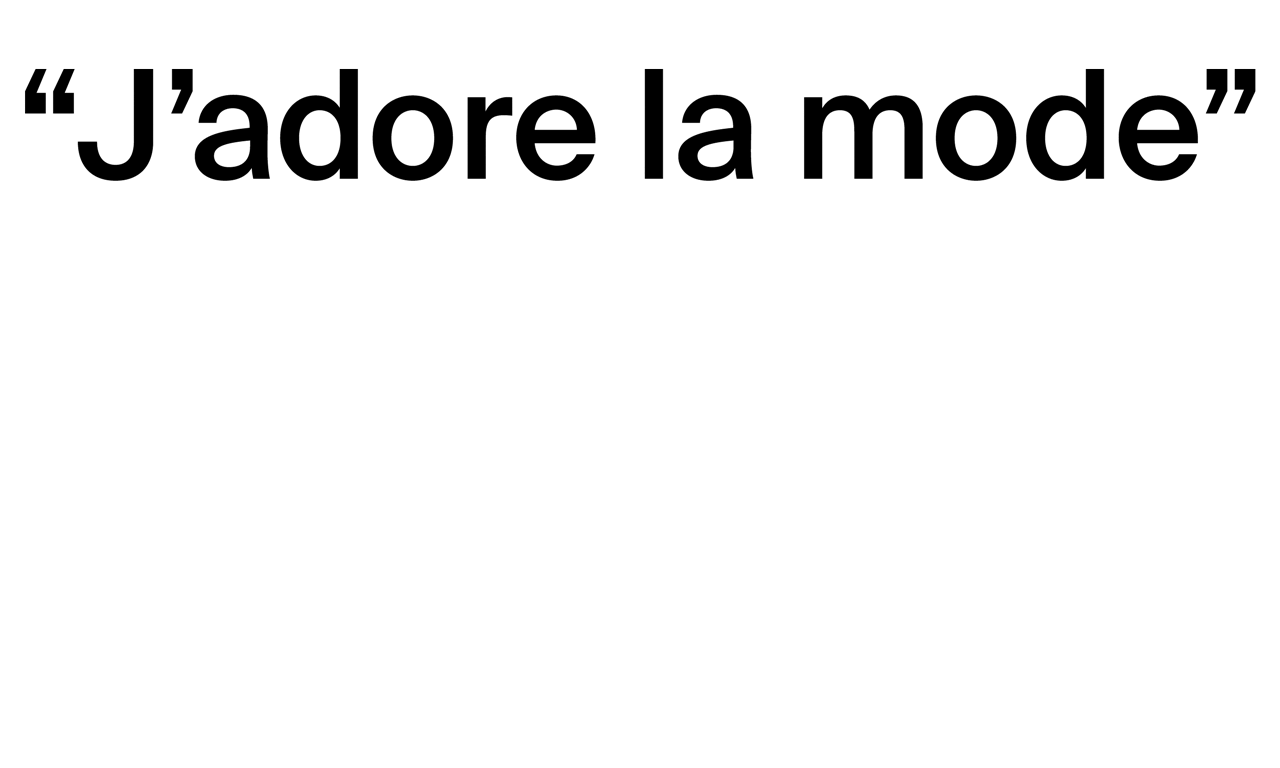
Rencontres Anti_Fashion is a declaration of love to the fashion industry. We want to raise awareness by bringing together creative and intellectual forces as well as economic players. Together, we can imagine new education, production, marketing and communication practices in fashion and in the creative sector as a whole.
In a world where reinvention is key, the objective of Rencontres Anti_Fashion is to explore and showcase new ways of creating and innovating. We want to contribute to developing ethical and sustainable practices that are more respectful of people and of the environment. This vision concerns fashion just as much as other universes: design, art, food, culture, music, etc.
Anti_Fashion Project is open to designers, manufacturers, retailers, entrepreneurs, academics, students and citizens. We get together to exchange views and reinvent a broken down system. Rencontres Anti_Fashion provides a participative platform with talks, roundtables, installations and pop-up displays, to showcase people and practices that are both fair and beautiful. The platform also includes student workshops and a mentoring program for young people from priority areas in Roubaix (through our partnership with La Redoute) and Marseille. Our work with students and young people is supported by Aix-Marseille Université, Esmod (Roubaix), the Parsons School of Design (New York) and Arnhem University. Our mentoring program targeting young people from disadvantaged areas aged 18-25 was launched in Marseille in January 2017 by Sébastien Kopp, co-founder of the brand Veja. Through creativity, the project brings hope to young people while giving them access to training and employment opportunities.
The 2018 edition will open up new horizons, with a wider conceptual and geographic scope. Anti_Fashion is relevant to every creative sector. This June, Rencontres Anti_Fashion will open up to new universes including music. And because Anti_Fashion is for all of us, our partner La Redoute invited Anti_Fashion to take over Roubaix.
NEW INITIATIVES
As the initiative gathers momentum, its scope of reflection is expanding. The third edition goes global, showcasing initiatives from across the world including Korea, Northern Europe and Southern Europe.
The project will deliver a participative platform to analyze, document and build new models. We want to show that another fashion system is possible by showcasing new educational, creative, marketing and production models.
A NEW PARTNERSHIP: LA REDOUTE AND ROUBAIX
La Redoute invited Anti_Fashion to turn Roubaix into a new fashion destination, with a free and open-access day of debates. Based on a particularly innovative economic model, La Redoute has turned its employees into shareholders. Its very active CSR policy, its commitment to young people from the disadvantaged areas of Roubaix, its support of young entrepreneurs through the Prêt-à-Décoller project in partnership with crowdfunding platform Ulule make La Redoute a natural partner for the Anti_Fashion project.
The partnership includes 3 parts:
A one-day event in Roubaix on 24 March 2018. A pioneer of reinvention, La Redoute invites Anti_Fashion to explore fashion’s new challenges.
Expansion of the mentoring program initiated in Marseille in 2017 to reach out to young people from disadvantaged areas in Roubaix. La Redoute will donate unsold stock for the project. With the support of Esmod Roubaix.
Creation of an open-access participative and interactive expression platform, to be launched on 24 March, where people can share their questions, desires and ideas to reinvent fashion, the economy and society into a more sustainable system.
A NEW FIELD OF EXPRESSION: MUSIC
The Anti_Fashion mentoring program expands to embrace music, thanks to the support of the Vivendi Create Joy Fund and Universal Music France. Just like fashion, music provides a great creative expression channel for talented young people from disadvantaged areas who have a lot to say but whose voices often remain unheard. This new program will include a Marseille-based writing workshop, with established professionals mentoring young people to create studio demos and present them to A&R managers at Universal Music.
The Marseille edition of Rencontres Anti_Fashion will host a performance/concert by Collectif Catastrophe, a collective who reinvent our relation to the world through their scenic pieces combining music, performance and literature.
THE 2018 ANTI_FASHION PROGRAM
Both events are free and open to all.
24 MARCH: La Redoute invites Anti_Fashion to Roubaix
A day of debates on the challenges facing the fashion world to make the sector more responsible. The main themes will include education, creation, innovation, female entrepreneurship and communication with millennials.
RENCONTRES ANTI_FASHION
1-3 JUNE, MARSEILLE
With this edition, the Rencontres Anti_Fashion event continues its exploration of fashion through all the sustainable and ethical practices that are currently reinventing the system. The event will embrace a broader perspective, to include music. The public will be integrated more directly to the thinking process: they will have a chance to contribute the roundtable on the 2nd June by submitting their contributions via the participative platform.
The main themes will include circular economy practices, new education and training methods, women’s role in driving change, and the hybridation of cultures and technologies.
Launched by Stephanie Calvino in 2016, Rencontres Anti_Fashion was inspired by Lidewij Edelkoort’s 2015 “Anti_Fashion Manifesto”. A vital initiative at a time when the fashion industry is the second most polluting industry in the world. Beyond fashion, every sector of the economy has to be reinvented.
www.anti-fashion-project.com

soft shells by libby oliver
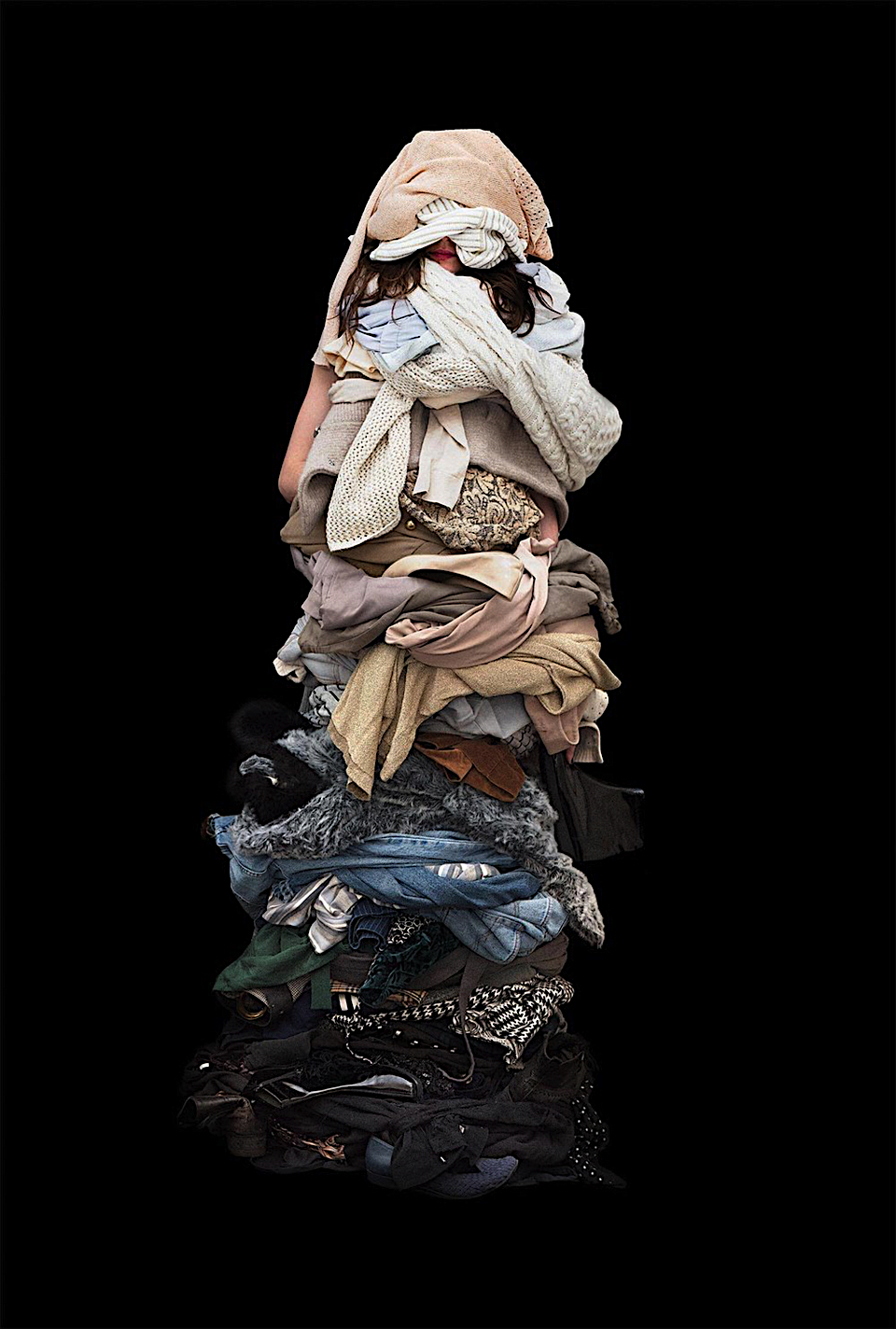
Janine. Photo: Libby Oliver
Clothing is a part of the communication between humans. It expresses our class, our religious affiliation, our occupation and gender identity. Every day, we can express who we are to the world by just getting dressed !
Libby Oliver is a Canada based artist behind an ongoing fascinating portrait series called Soft Shells. Each photo captures a different person with their entire wardrobe wrapped around them.The human body disappears behind the clothing carefully selected to define an individuality. For Oliver: « Fashion is interesting because it does have so much cultural and social and environmental and self-identity tied up into it. Clothing grounds us to our notions of self and works to cue others to our chosen identity narrative. What we wear is thus both an exercise in our creative individual autonomy and a system of social surveillance and categorization."
Oliver is precise and clear about the way she works : « I enjoy the mundane, habitual and borderline ritualistic underpinnings of our culture. I am interested in our struggle for independence and control within the greater limitations of prescribed social constraints. Through investigating our perceived individuality. I use categorization, repetition and the realism of these mediums to extract, or recreate moments of time that emphasize the peculiarity of trivial collective habits.I use humour and satire to make my work accessible to a wider audience in an attempt to create a space for social inquiry and critique for the relatively unconsidered patterns of society. »
Soft shells are the expression of an ethnology study of our modern lives, these portraits reveal our constant research for identity and the consumerism system of today.
Cecile Poignant
www.chewonthisart.com
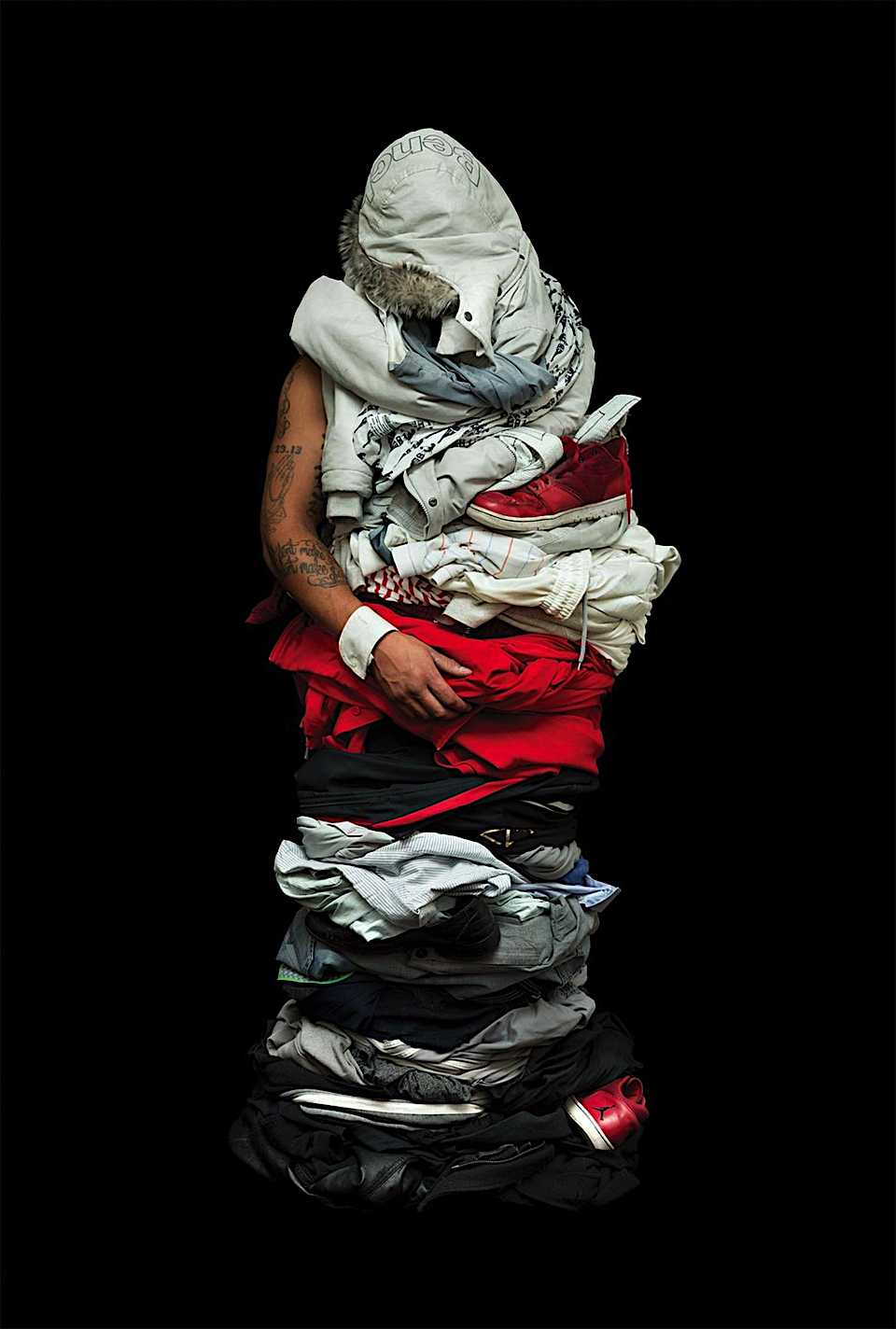
Tyrone.Photo: Libby Oliver

Leaf.Photo: Libby Oliver
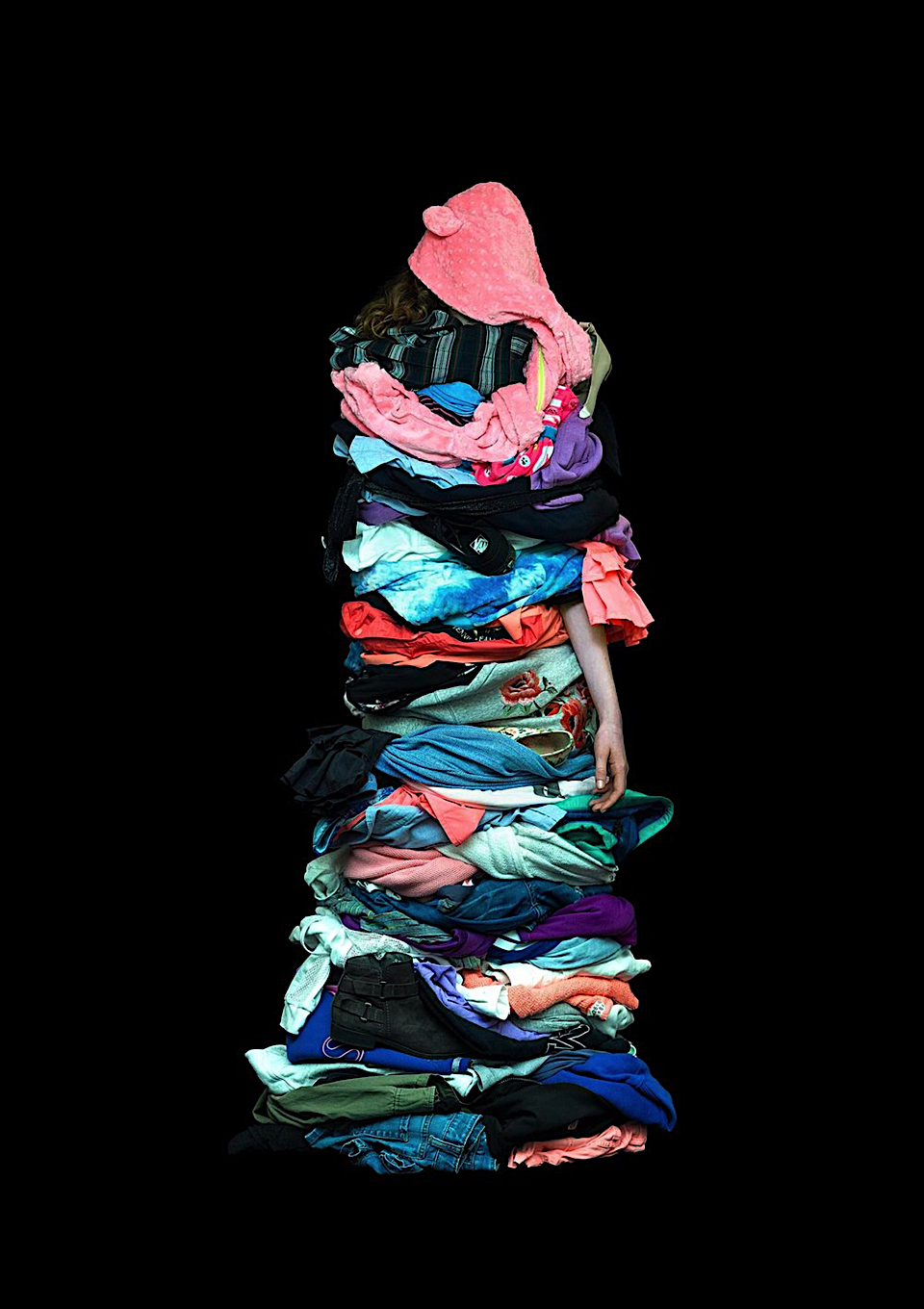
Josie.Photo: Libby Oliver

Florence .Photo: Libby Oliver

David.Photo: Libby Oliver
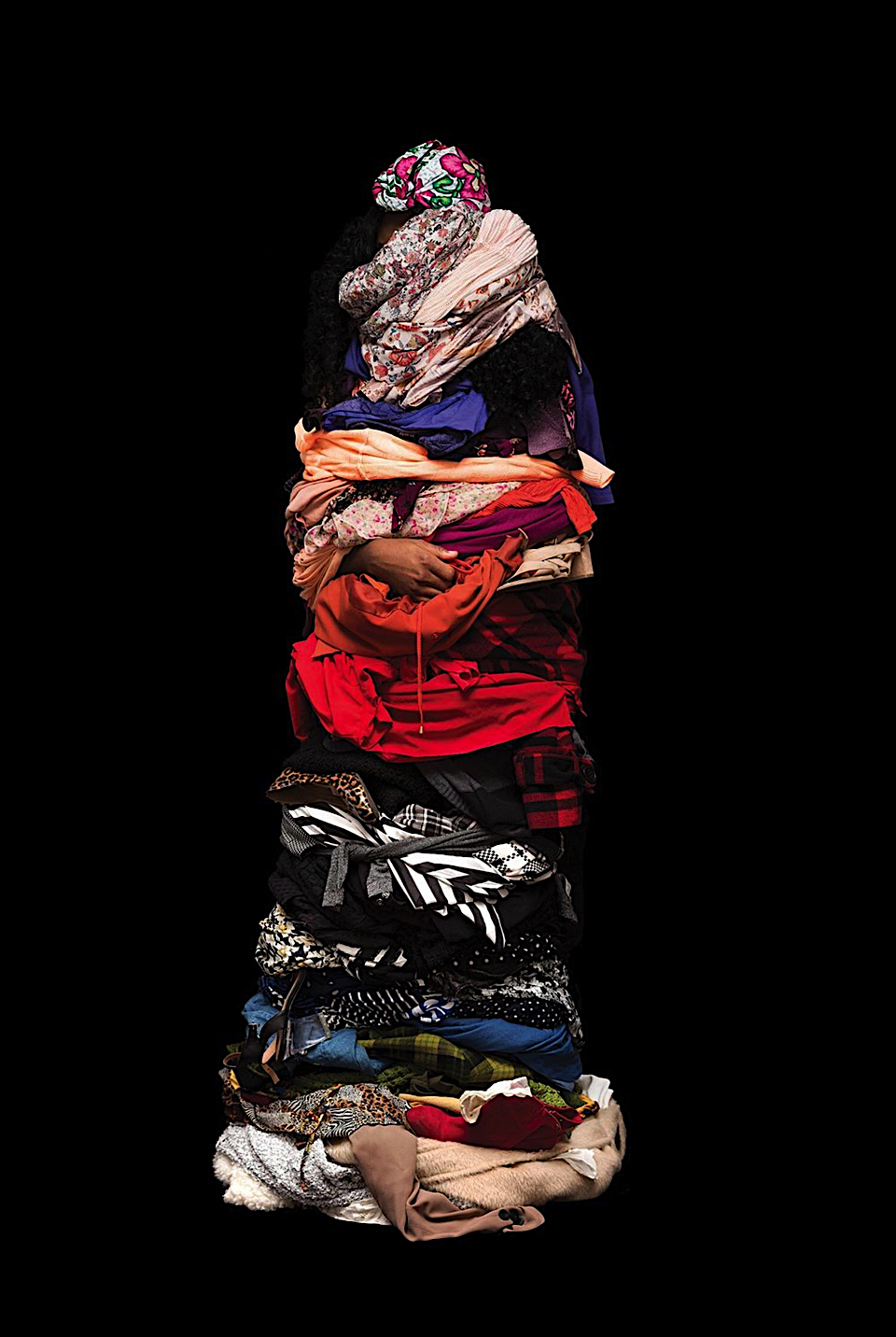
Boma.Photo: Libby Oliver

Alex.Photo: Libby Oliver
république by samia ziadi
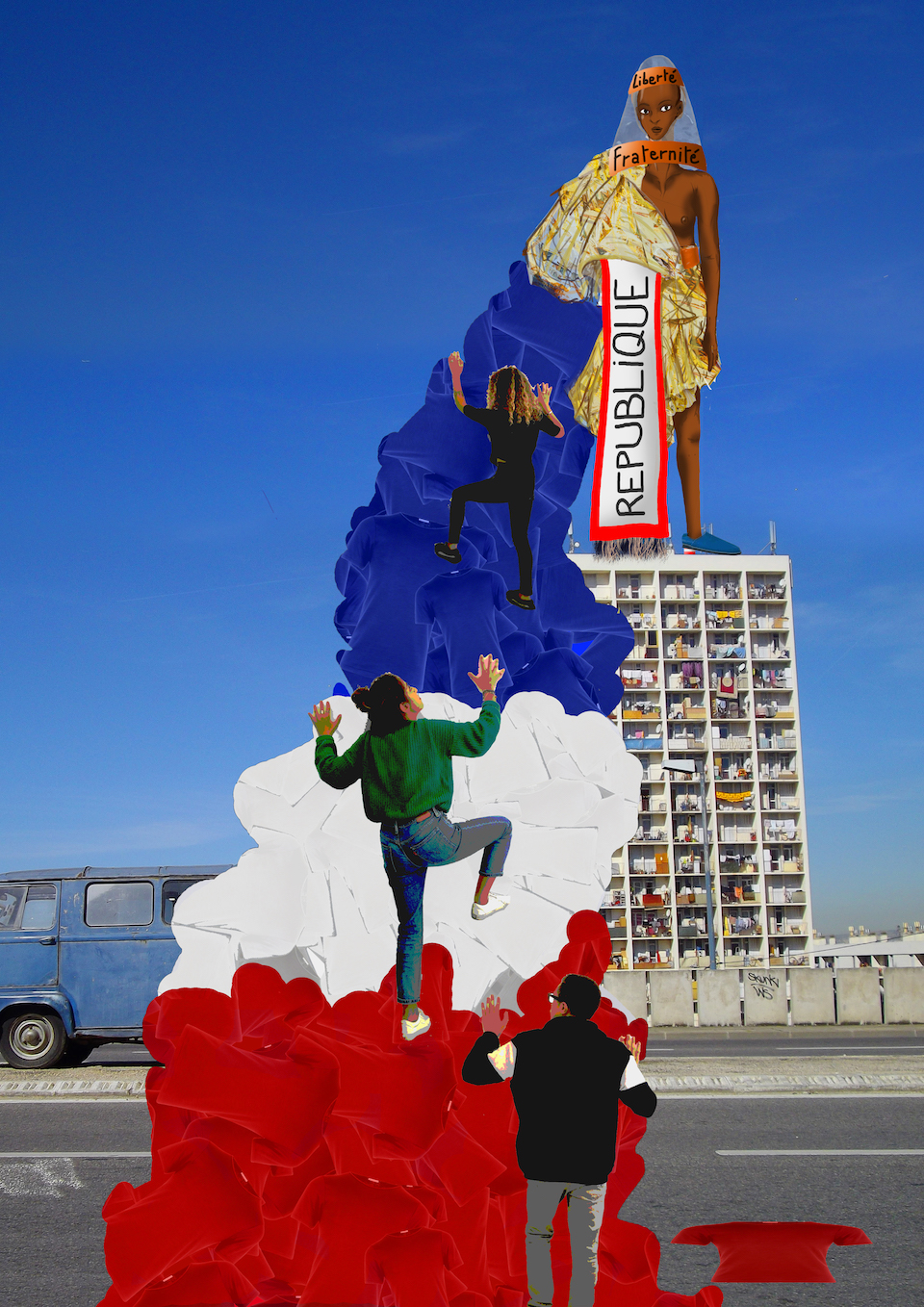
Samia Ziadi was part of the latest ANTI_FASHION gathering in Marseille France. For this new edition she wants to do a major project which has a very strong and meaningful project based on the Republic, which has caused questioning et continue to do so since the last elections. What do her/our generation as well as others think about this word and symbol? Is there a meaning for the youth ? She wants to create a piece of clothing at the core of this inquiry and to be able to stage it. Her work in this piece of clothing is not only identifiable with fashion.
WHAT DOES IT CONSIST IN?
She is creating an unstructured Trench/Dress redefined with an oversized sleeve that mesures between 10 and 15 meters. The sleeve will be representing the colours of the French flag by using tee-shirts and sweat-shirts.
The idea is to use second hand clothes that have a real history and story behind them.
« Women have always been at the core of my representations and of my research ». She is often portrayed in a divine form. This dress will be worn by a young woman perched on top of a HLM housing. The sleeve will descend from the top of the building to the ground floor where young grils and boys will hanging on, trying to climb up. The sleeve is like a long journey, a path.
WHY?
Through this project Samia Ziadi wants to raise awareness around the youth of our society on the meaning of the words of our daily life. The word republic concerns her regarding her generation, it questions her on subjects like actuality and society. Today she is sponsored by the COLLECTIF 52, which is a group of feminists activist.
This dress will be exposed in June 2018 during the new anti_fashion conference in Marseille.
Ideally, she will travel so that everyone can see her, be troubled and leave them questioning.
It is a technical and visual challenge. Emotions superset everything !
Igor Naulleau
oma's philosophy
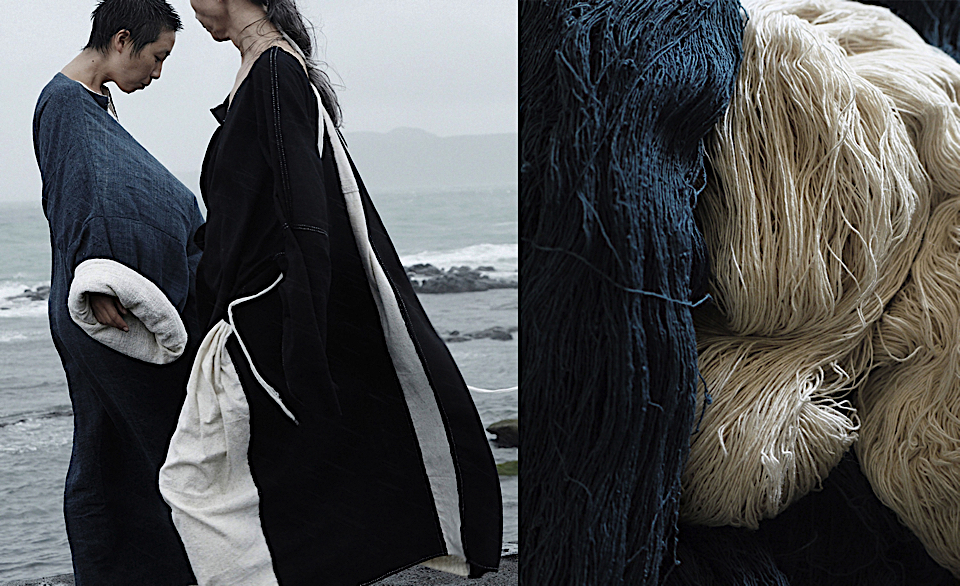
OMA is an artist and designer from Korea, who founded her clothing and textiles studio in 2010 in Seoul after having worked with Alexander Mc Queen in London.
Her very special work cleverly weaves the skills of traditional craftsmanship with an understated contemporary design. OMA shows another aspect of fashion and design, one that embodies a distinct philosophy incarnated by respect for traditional handcrafts and the environment.
Thus, she only creates a small range of bespoke pieces that are delivered through partnerships with local artisans primarily based in Asia. Her design is textile-led, its appeal lying in the subtlety of the texture, a timeless aesthetic and materials of lasting quality.
From clothes to home interior items, OMA works with natural fibers such as raw hemp, silk and hand spun cotton, and with natural practices as hand weaving and dyeing.
OMA has recently created a natural indigo and ebony collection of garments and interior textiles for Spring/Summer 2017. For this new collection she has sourced all the textile elements from diverse artisans in Korea, Northern Thailand and Laos.
Recently in Paris, she was part of the Heartwar exhibition/sale at Lidewij Edelkoort's Studio. Oma showed new creations made with different process of felting and dyeing with ebony seeds and nuts alongside with the new indigo collection.
In July Oma was invited by the Turkish design group Koleksyon and their Design Foundation to tour Turkey to meet craftsmen, textiles producers and manufacturers. She went to Hantay (Antioch) in south east Turkey close to the Syrian border. In this region she found dedicated families producing silk, cotton and others textiles with an amazing quality and remarkable know how.
Oma will continue to create unique clothes and garments and, to answer many requests she will develop this winter a new men’s line called OMEN by Oma.
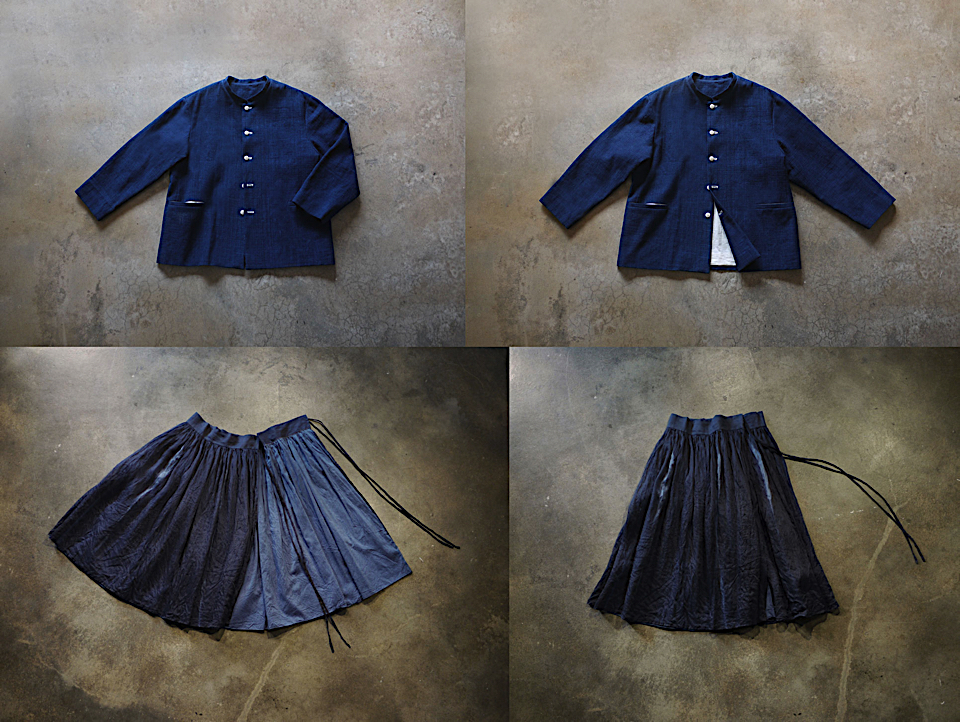
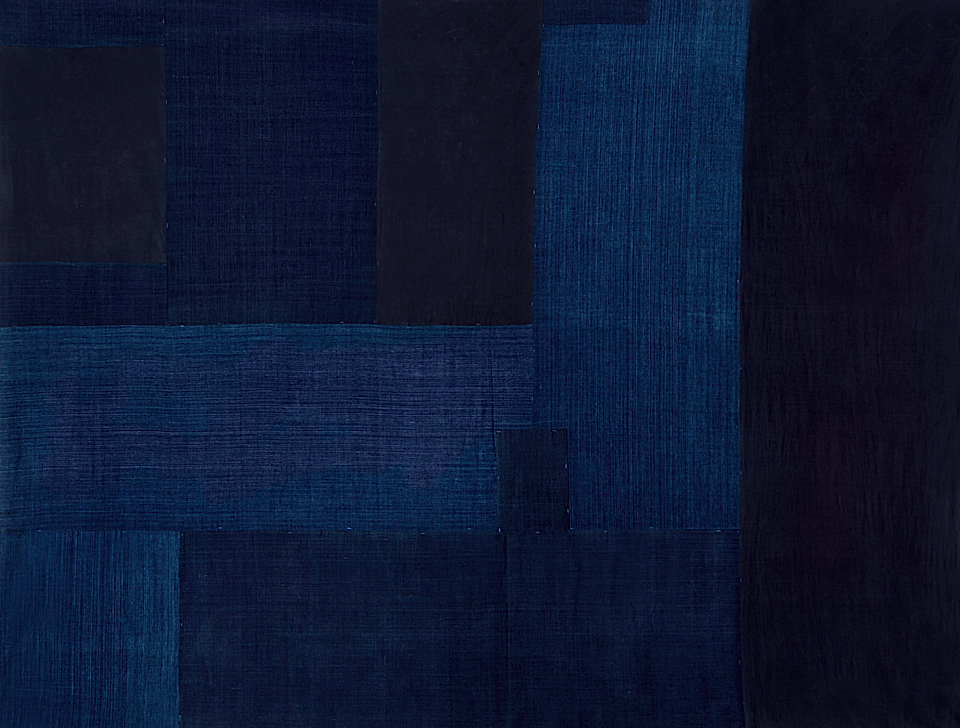




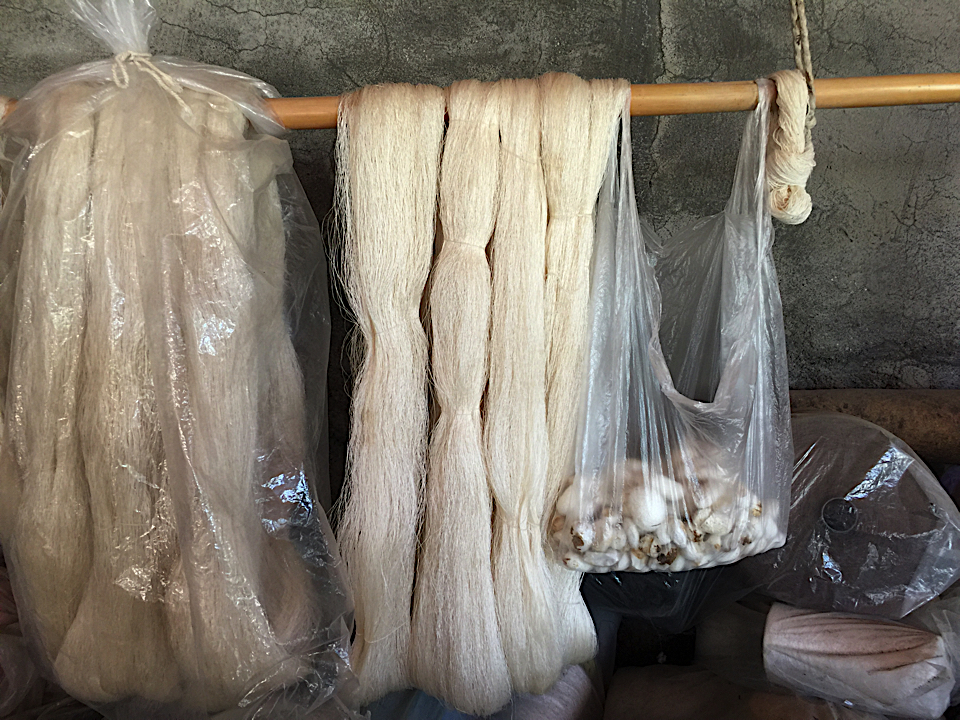
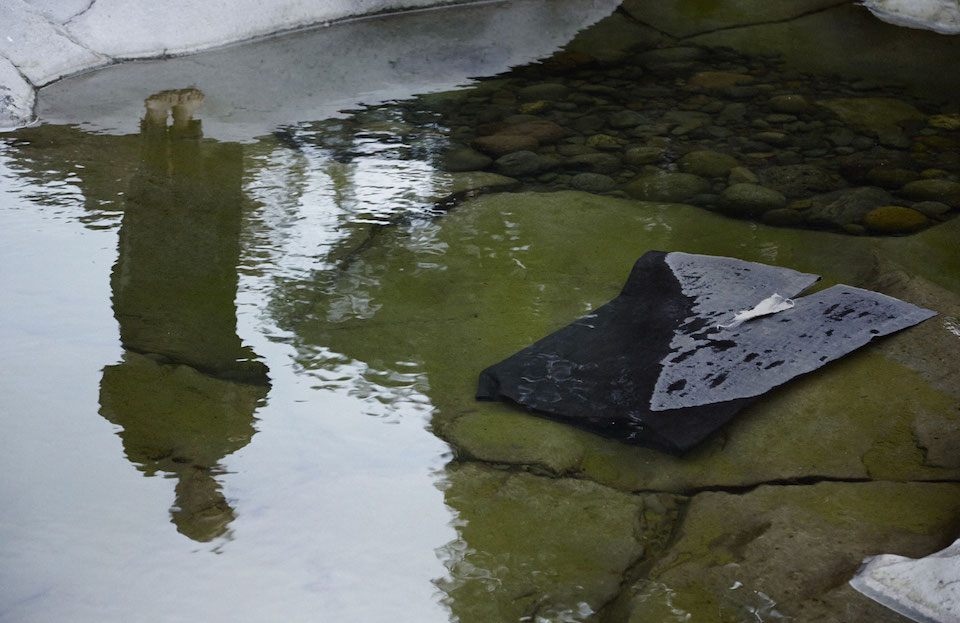
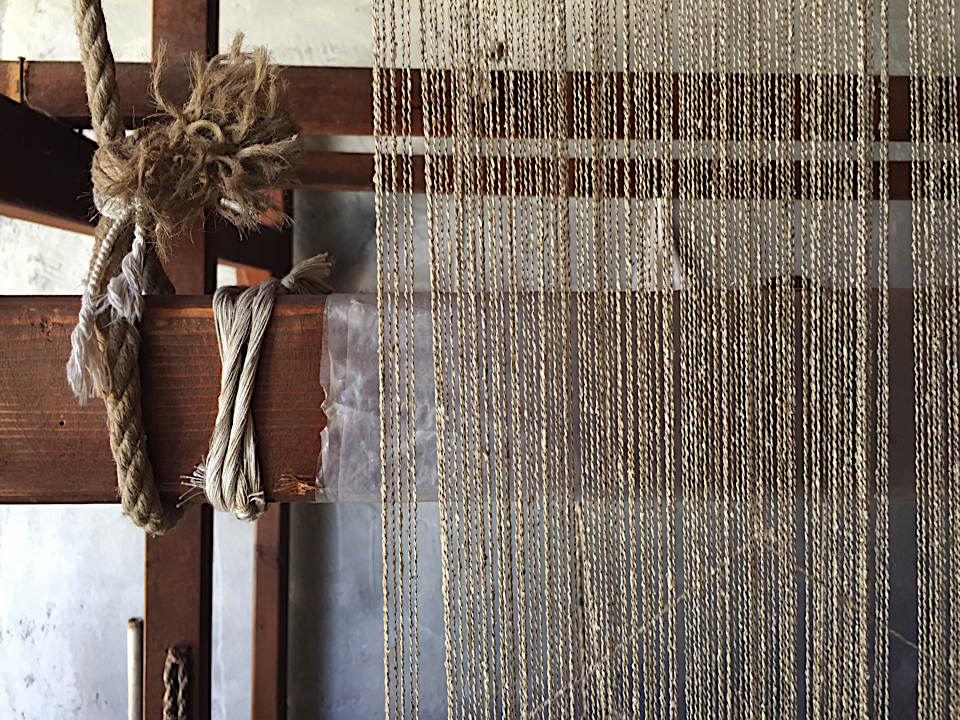
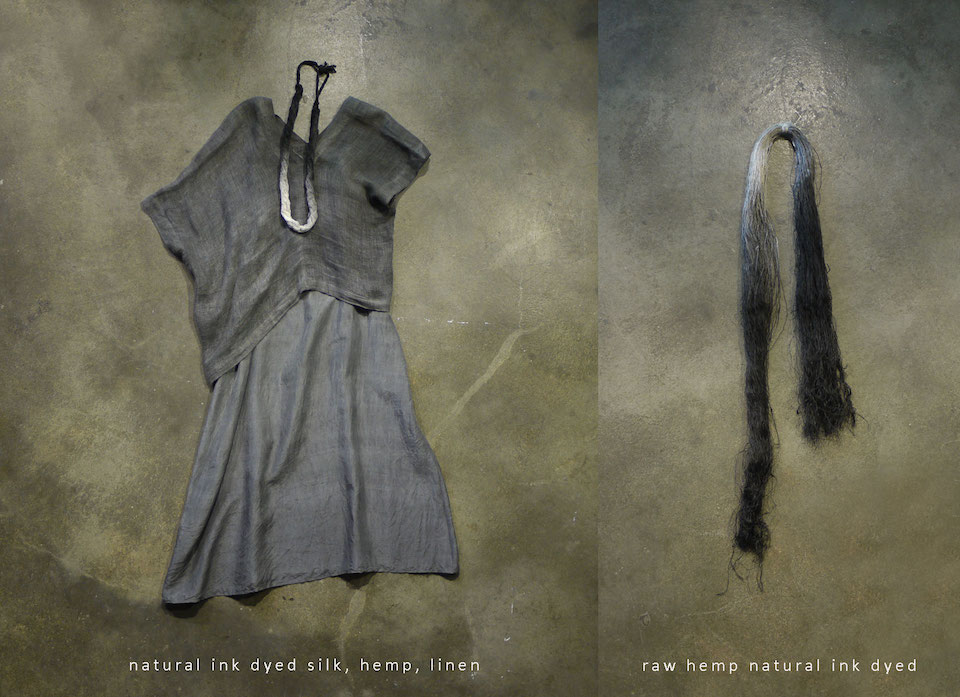
vetements x saks
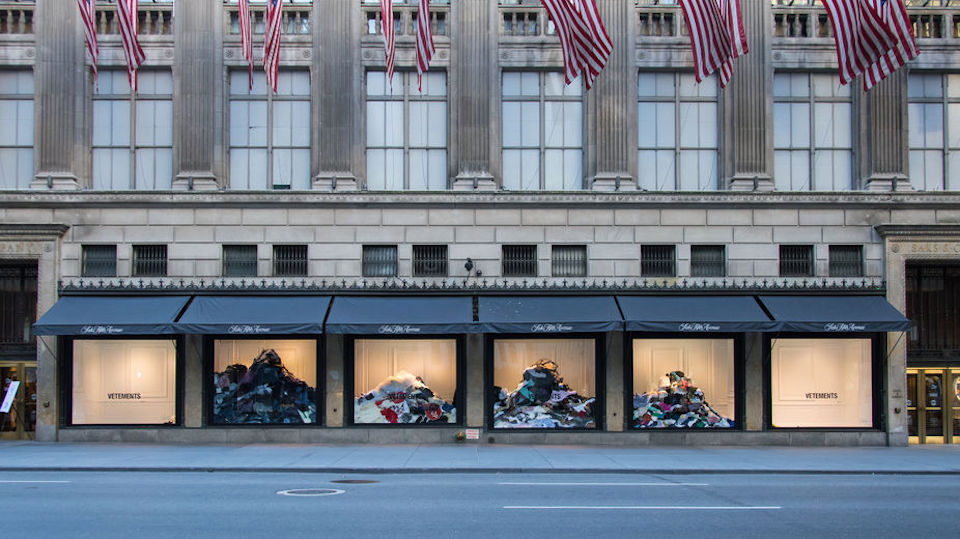
French for “clothing“, Vetements was founded by Demna Gvasalia, a graduate from the Royal Academy of Fine Arts in Antwerp, Belgium. The first collection was launched in March 2014. Vetements focuses on what the name stands for, by delivering closet staples excluding the excess trimmings. Ultimately, the design approach is to create clothes that are appreciated for their unique creative and technical qualities.
Saks NYC joined force with Vetements to take position : « Using unwanted clothing, our windows are a bold statement by Vetements calling us all to offset the excess in our lives. At the end of the installation, Saks will donate the textiles in our windows to RewearABLE, a clothing recycling company designed to provide sustainable employment for adults with developmental disabilities. »
On Vetement’s Instagram account the words are very clear « Fashion is a very dirty industry. Deadstock in the US amounts to $50bn every year. After the oil industry, fashion is the second-biggest polluting industry in the world. Fashion chief executives scream about sustainability, and how they plan to cut carbon emissions by 40 per cent and reduce environmental impact by 50 per cent in every interview. But none of those brands seem to understand that a much easier solution is just in front of them.
Preventing overproduction in the first place would have an immediate effect on reaching those sustainability goals. The industry talks about conspicuous consumption — buying for the sake of buying — as the reason behind the growth in the luxury segment. But brands are producing more product than there is demand for. I call it conspicuous production, producing for the sake of producing and artificially inflating the numbers." #VETEMENTSxSAKS
Vetements
RewearABLE
Saks
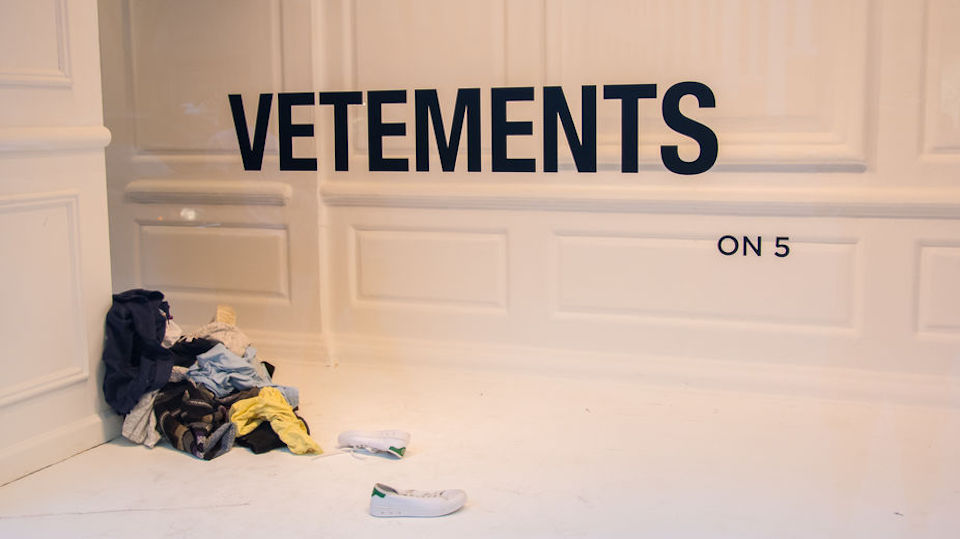
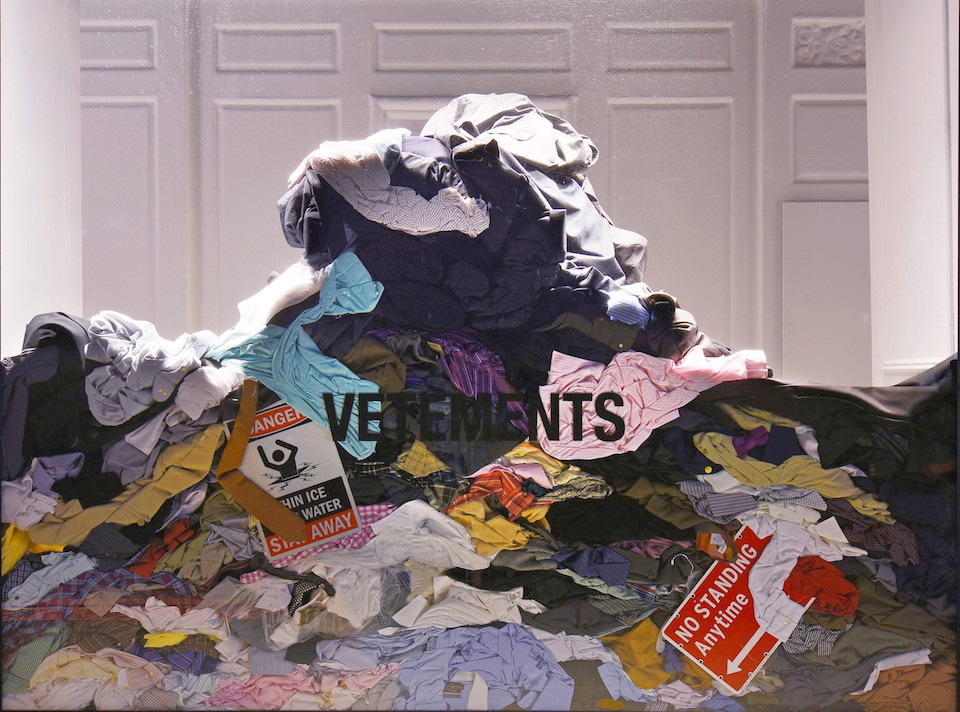
samia ziadi

Samia Ziadi was part of the latest ANTI_FASHION gathering in Marseille France.
Samia is a young French woman of Algerian origin, she was born in Colmar - north of France - and came in Marseille when she was pretty young. After studying graphic design and typography , she began her career in decoration and painting for television and film sets. She discovers an interest in staging and lighting.
She is a pure self-taught fashion designer, she blends art, photo, graphics and video.
Her work depicts today's youth, which is little or badly represented.
The Mediterranean is part of her inspirations. It includes religious identity and migration from Africa and Maghreb. Samia is obsessed by the style, the image and the social identity of garments. For her, garment is like a support and a standard.
She hijacks the garment such as the hijab and makes it transparent instead of being opaque. The prayer garment become a jogging named Friday Jogging.
Her work was noticed in 2016 by Jean-Charles de Castelbajac at the Festival of Hyères. These positive returns push her to develop her own original identity : mixing style, styling and photographic universe. She uses collage to divert the garment from its usual environment, thus creating an emotion an interrogation without speech or judgment.
She wants to make the audience react by staggering.
In her photos she talks about news, migrants, poverty. The garment is a vector of messages. She makes it travel and places it in popular places. She uses collage to spread messages and make people think about our world.
For her the garment is more than fashion !
It is life!
It represents a person with an identity, a story and goes beyond the simple aesthetic representation made in a studio.
The streets are an important part of her work. Nothing is planned in advance. She works with inspiration. When she "shoots" she works with what she has : the street and its accidents. The idea is to obtain a visual as sincere as possible by keeping the energy of the street and its spontaneity.
samia_ziadi
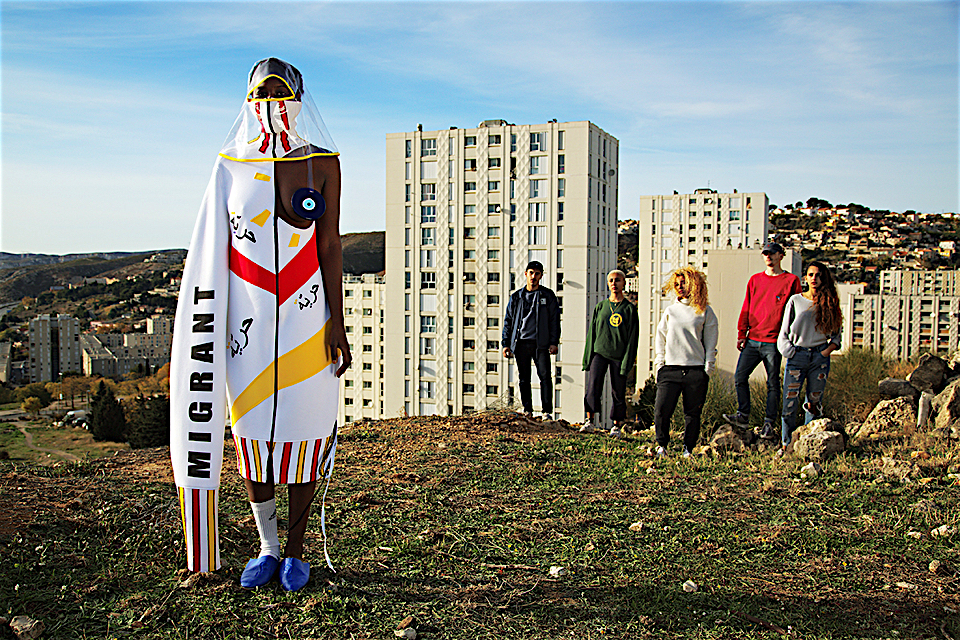
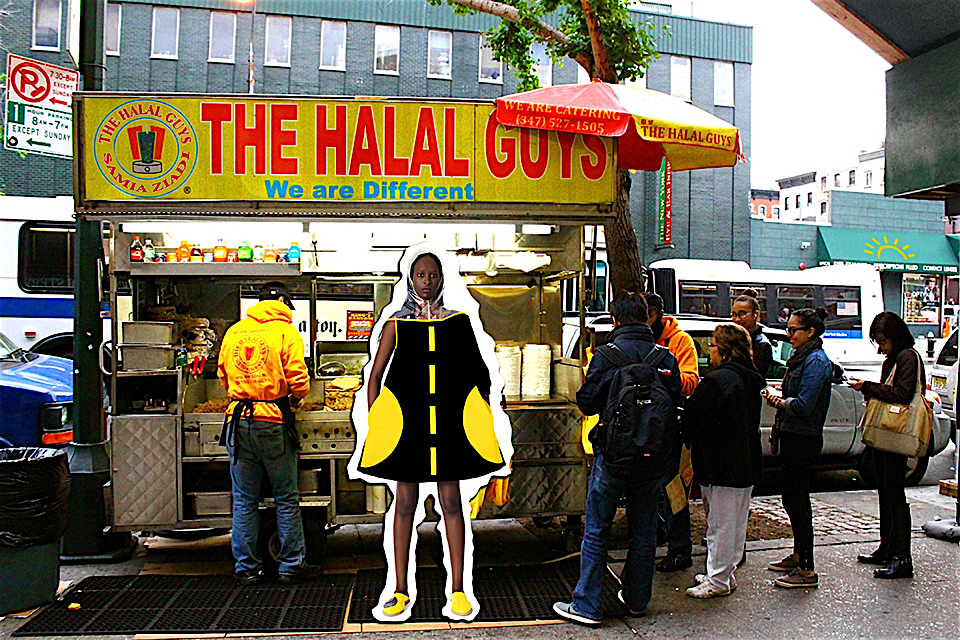

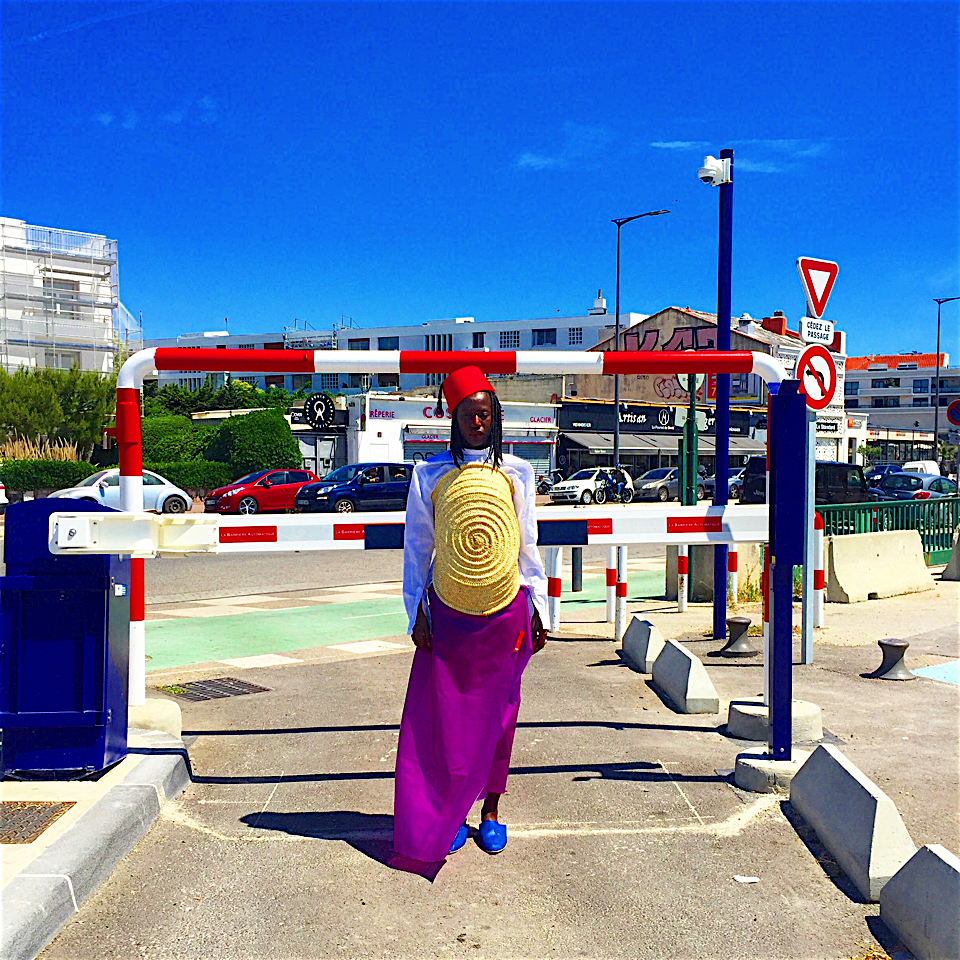
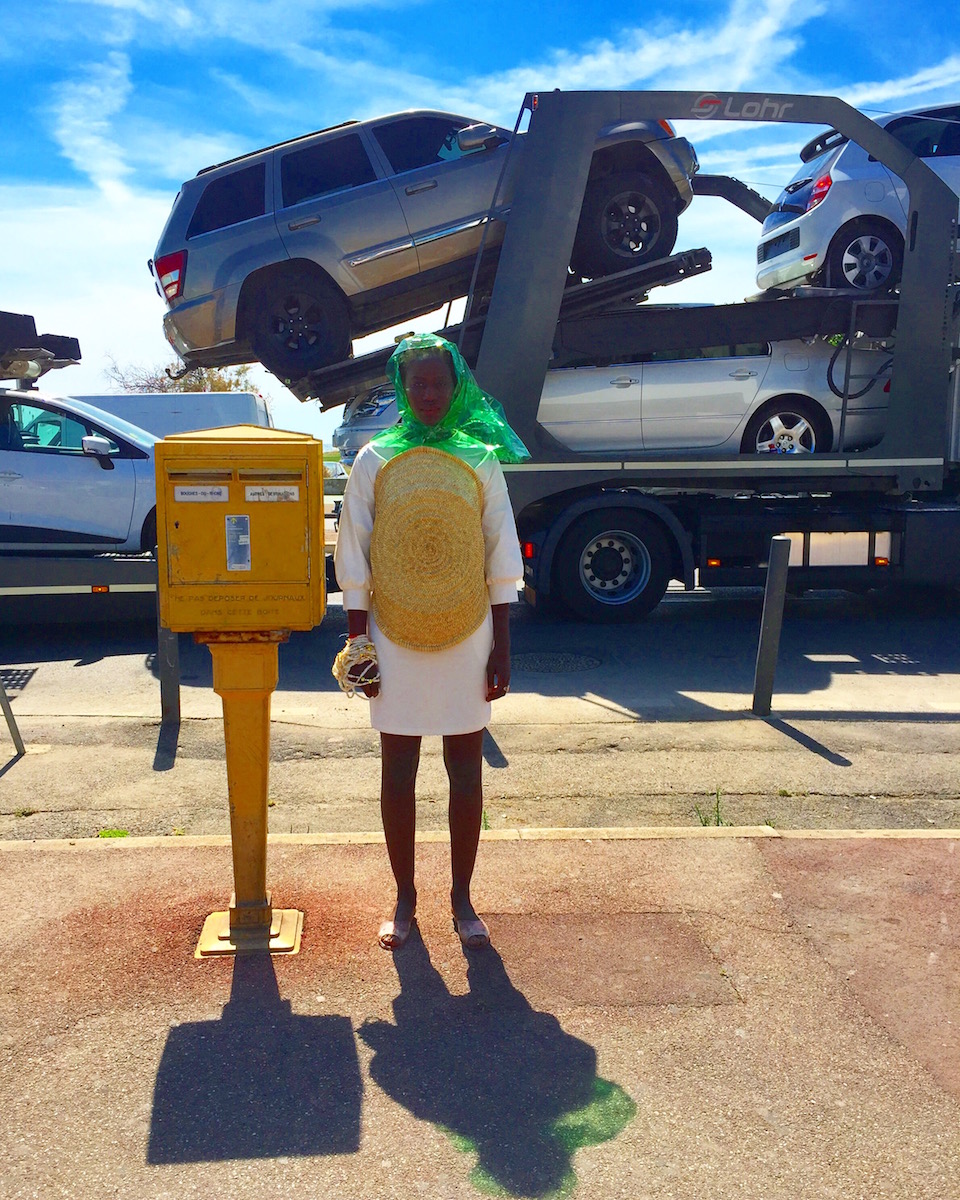
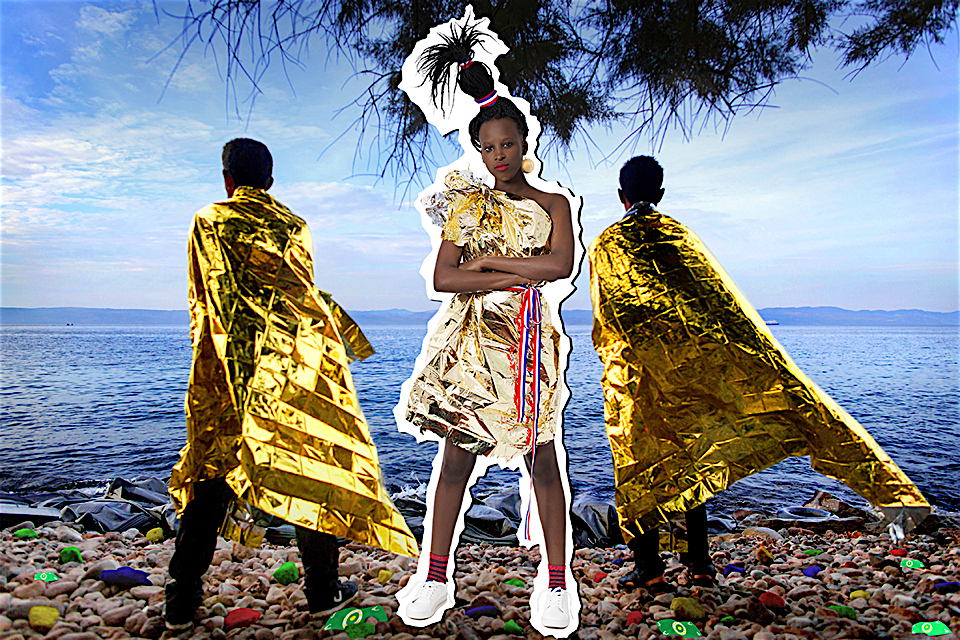
anti_fashion in situ #2
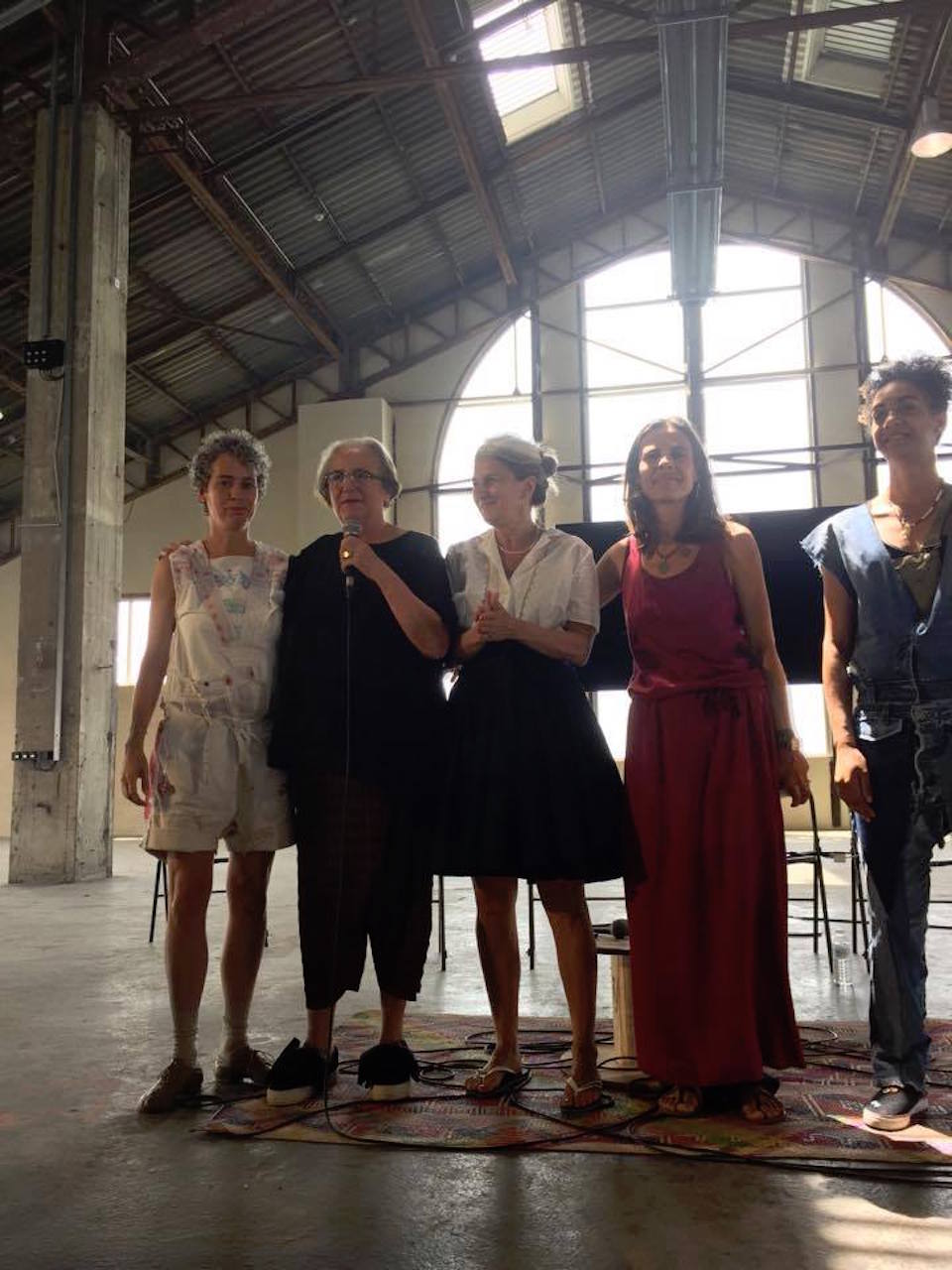
Lidewij Edelkoort's 2015 Anti_Fashion manifesto reflects upon her understanding of the currently obsolete fashion system, positing how the industry can heal and progress in today's reality. No one is spared at present as from education to production nothing holds up anymore, resulting in the necessity to react through reconsideration of current systems and values.
New modes of smart consumption need to be established as well as a less individualistic way of living. It’s essential that there is transparency and visibility of those in the foreground and background. Young creators need to be highlighted as well as for example seamstresses, crafts people, stylists, marketers and journalists.
The Anti_Fashion seminar, which took place in Marseille, is structured as a participative platform. It’s a test lab consisting of three parts, which allows connections to be established and skills to be gained through discussion, workshops and collaborative making.
A panel discussion invited the public into dialogue with experts, to discuss topics ranging from a new dynamic of engagement to production. This invited interesting conclusions to be drawn, because of the different points of view. At the same time, it was the occasion to meet six new, unique sustainable designers. They know how to mix legacy and innovation and taught people how to dye with indigo and discover new ways of dying leather during the workshops.
Besides learn how to dye, there was an opportunity to participate in ‘The Golden Joinery’ experience, a worker cooperative of couture weaving, which has the objective to invite participants to repair their favourite article of clothing with a gold thread. Golden Joinery uses a Japanese technique called ‘The Kintsugi’ for repairing porcelain or broken ceramics, using varnish coated with gold powder as a means to value that what is broken. The technique is a philosophy of imperfect beauty, which allowed people at Anti_Fashion in Marseille to reinterpret the concept ‘modern fashion’.
This Anti_Fashion second edition was inspiring, and once again left the idea behind that we need to rethink, relearn and recreate for the society who is longing for altruism, quality and products made with love.
Igor Naulleau
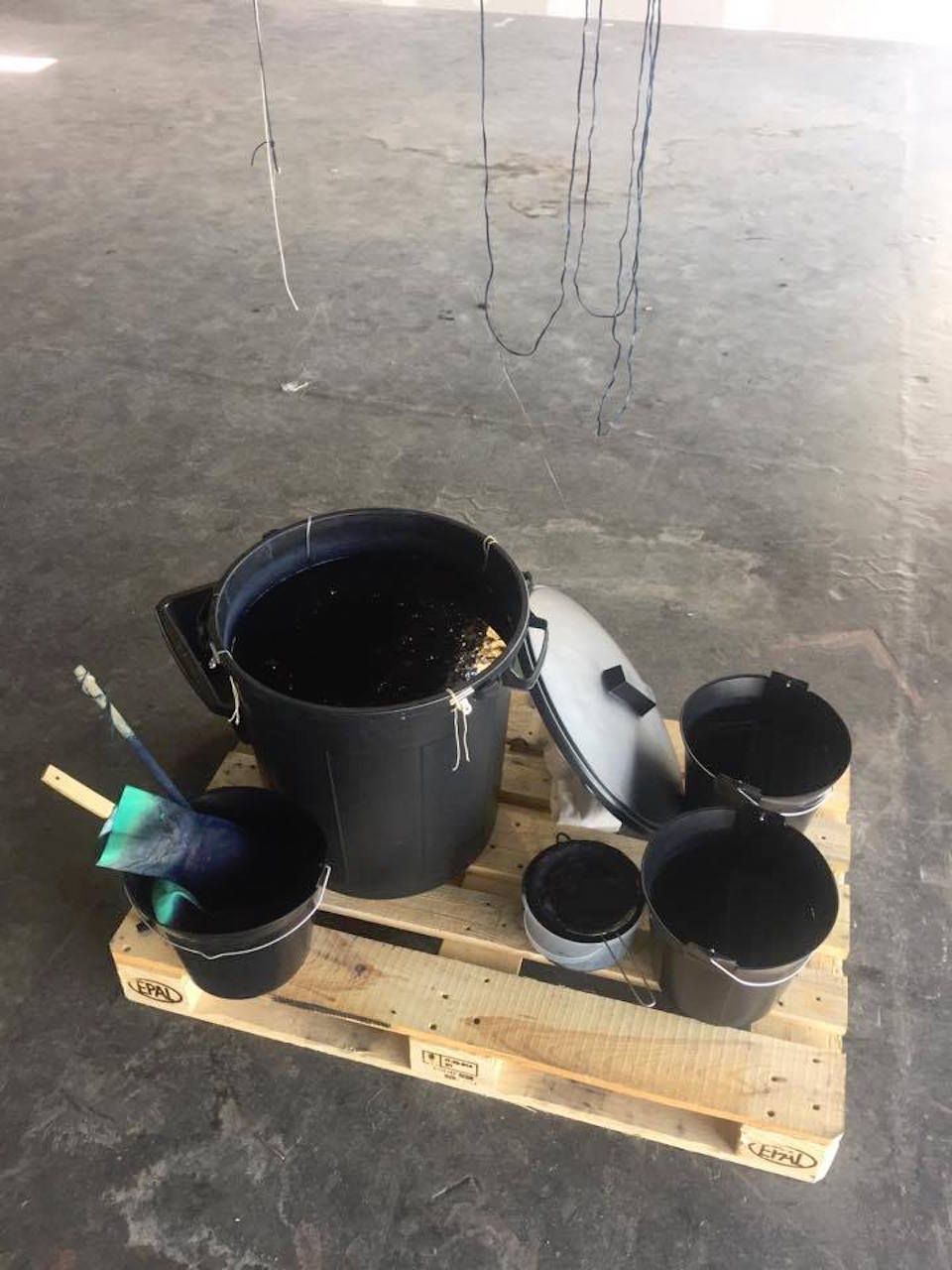
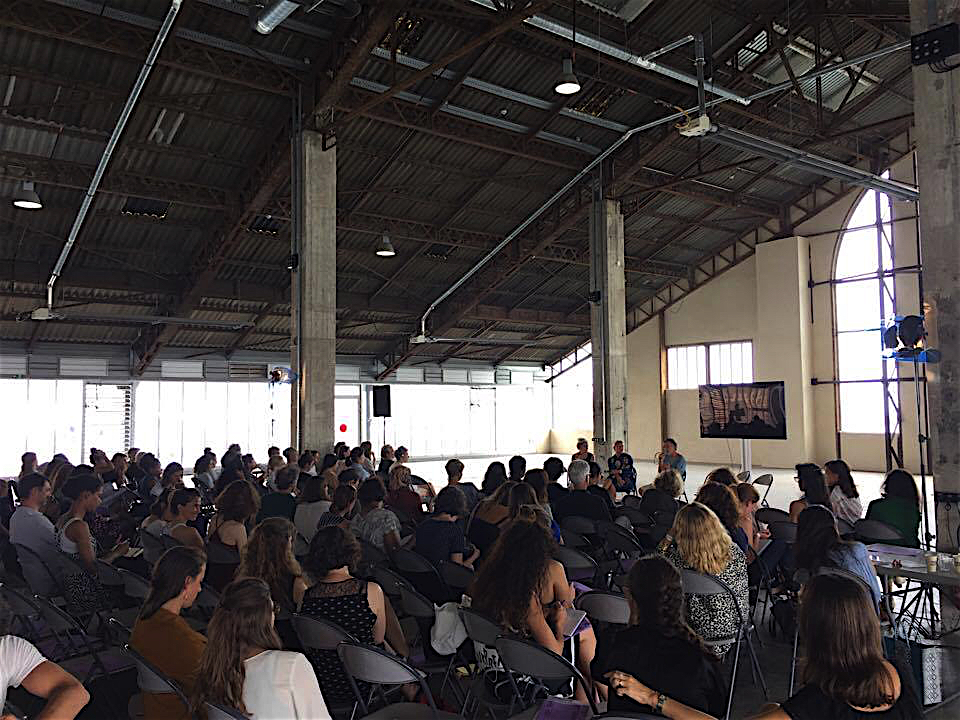
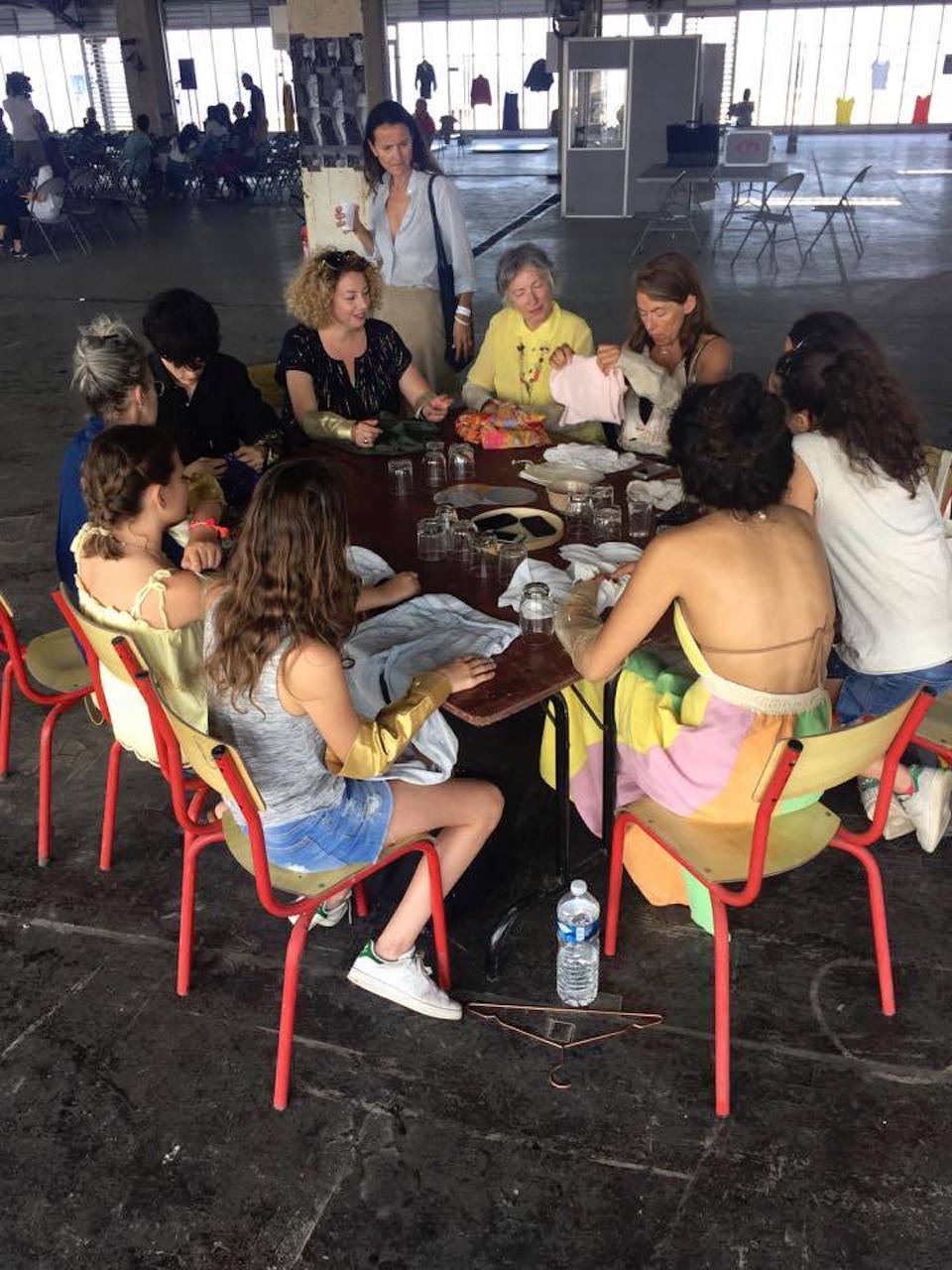
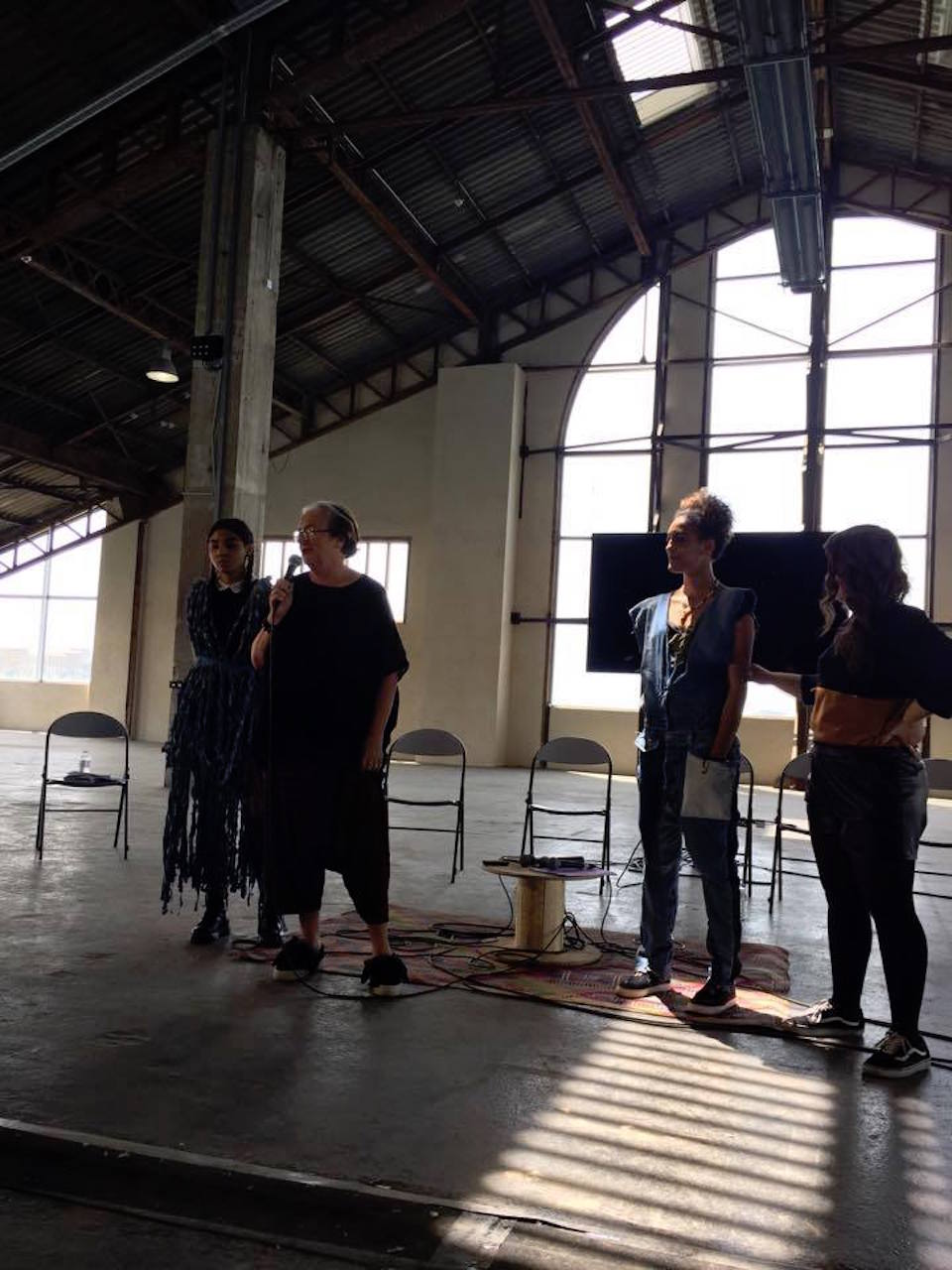
anti_fashion in marseille // france 2017
The project is born of the Manifesto ANTI_FASHION published in 2015 by Lidewij Edelkoort.
The purpose of this event is to organize meetings and exchanges around new dynamics of creation and innovation, to imagine reflections on new economic models.
From June 2 to 4 , Anti_Fashion is back in Marseille - France.
The event is located at J1, a cultural site on the banks of the city. It’s the second edition and this year, the event has an extensive program. The festival is free and open to every one.
Among the twenty guests speakers , Valerie Steele, curator of the Fashion Museum of the Fashion Institute of Technology in New York, Uriel Karsenti, founder of Maison Standards and Laetitia Jacquetton, creative director for Galeries Lafayette.
Sophie Fontanel, former journalist at Elle, creator of dailyElle and fashion columnist at L'Obs will supervised the debates.
A competition - open to young people from the surrounding cities- is organized by Sébastien Kopp, co-founder of Veja,
A workshop space brings together 6 designers: Anaïs Guéry, Cecchi de Rossi, Savoar-fer, the collective Out-of-studio, Alexander Quoi and Blanche Abel, selected for their know-how and progressive vision of the sector.
Pascale Gatzen and Mae Colburn will share their experiences as a worker cooperative of couture weaving and Natahlie Chanin presents her famous patchwork creations from the capable quilting women of Alabama.
Join the event to imagine the future of Fashion.
Enjoy!
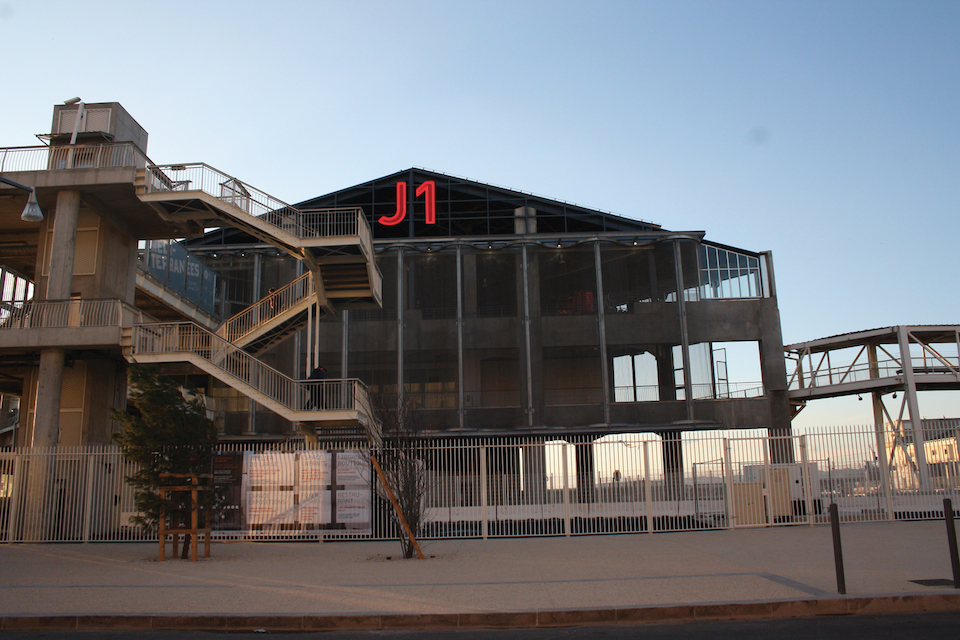
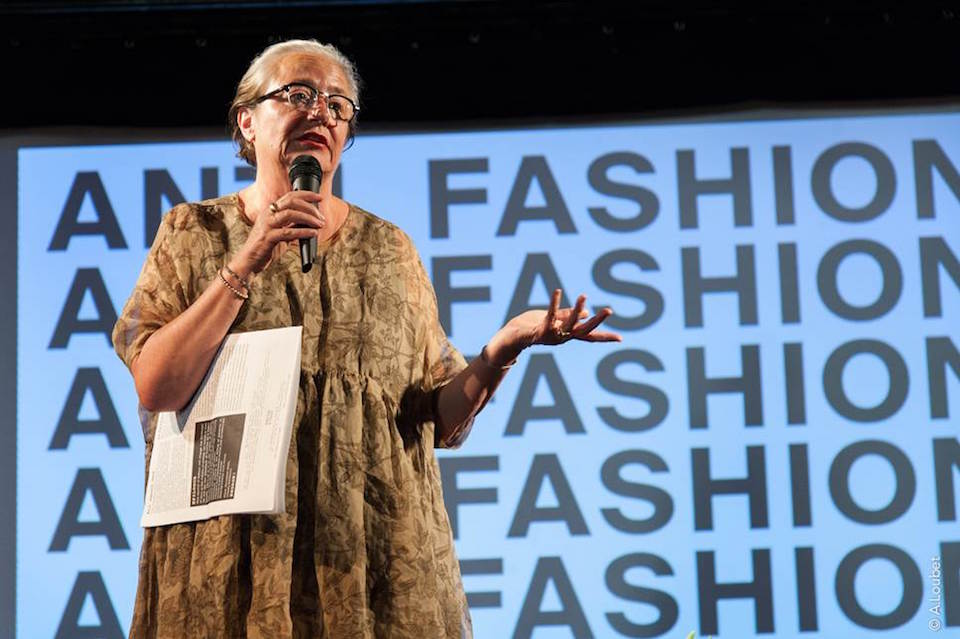
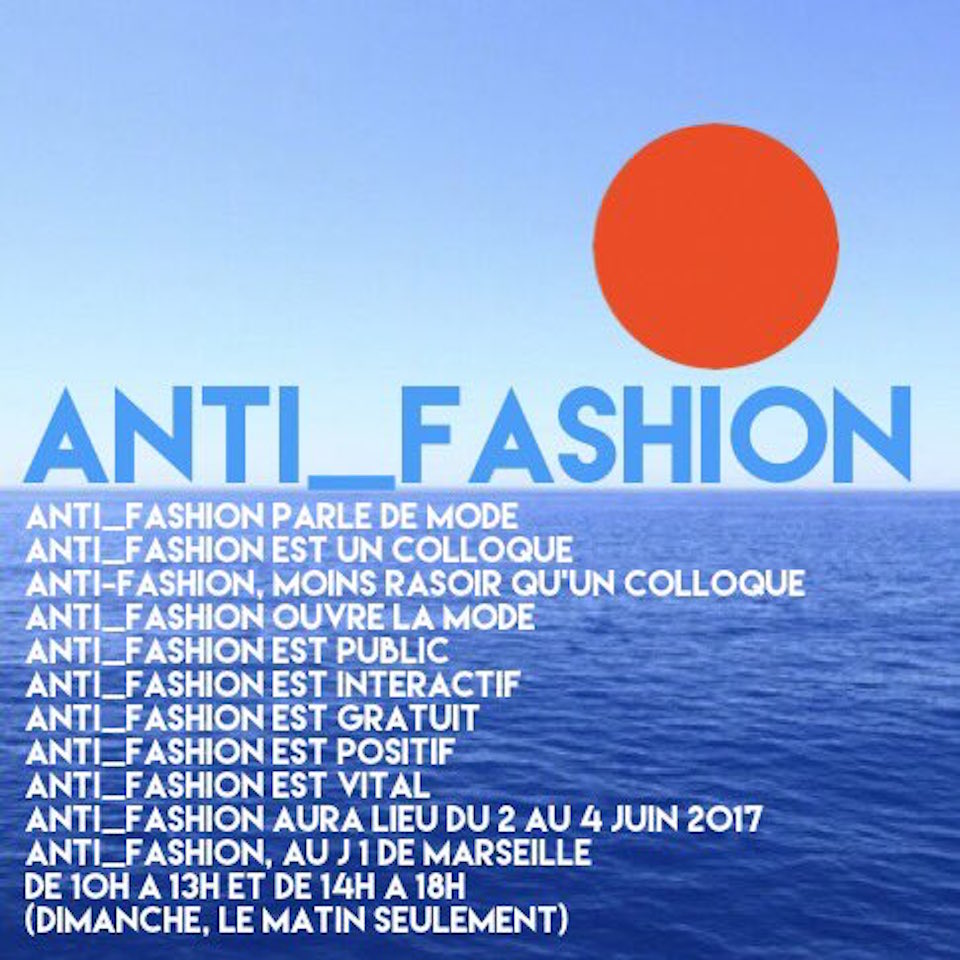
the escape of fashion
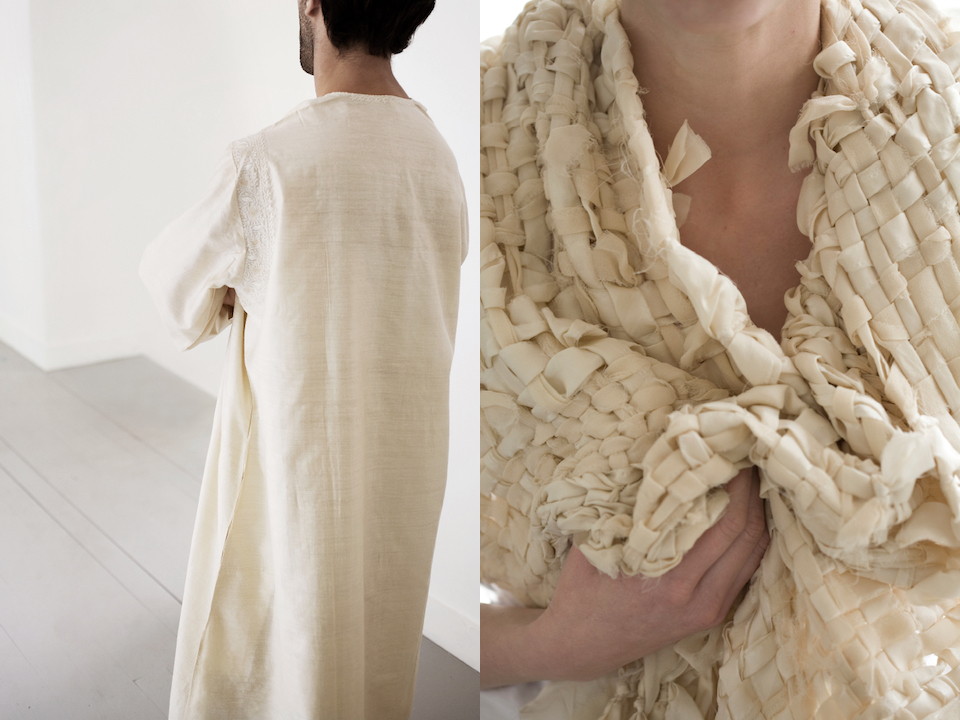
photos Imke Klee
A longing to make the familiar strange, to transform dressing into a sacred experience, to practice asceticism in the pursuit of meaning, to abandon fashion in favour of an alternative style-less vision. A colourcard of non colours, non expression, non attention. a group of cool neutrals that will envelop our souls as much as our bodies. A reformed vision of clothes able to ignite the spark of godliness in each human being.
An indistinct and amorphous rather than definite design that offers solace like a bandaid or a bandage.In a blend of myth and memory we revisit the stories of the Olympus, the Bible, the Koran and the spirited movements of Isadora Duncan and Pina Bausch, to be intimately woven into our fabrics and incorporated into our behaviour patterns.
Worn barefoot and without details, the coordinated styles attest to research seeking a deeper relation with cloth and culture. in order to be peaceful, think creatively and live fulfilled, avant-garde consumers turn to cotton voiles and laundered linens as well as wrinkled leathers and wild silks. Choosing clothes that come close to philosophy and anthropology, that try to express ideals for a future life where consumption becomes a wasted energy devoid of feeling and a handicap for the development of human genius.
Lidewij Edelkoort
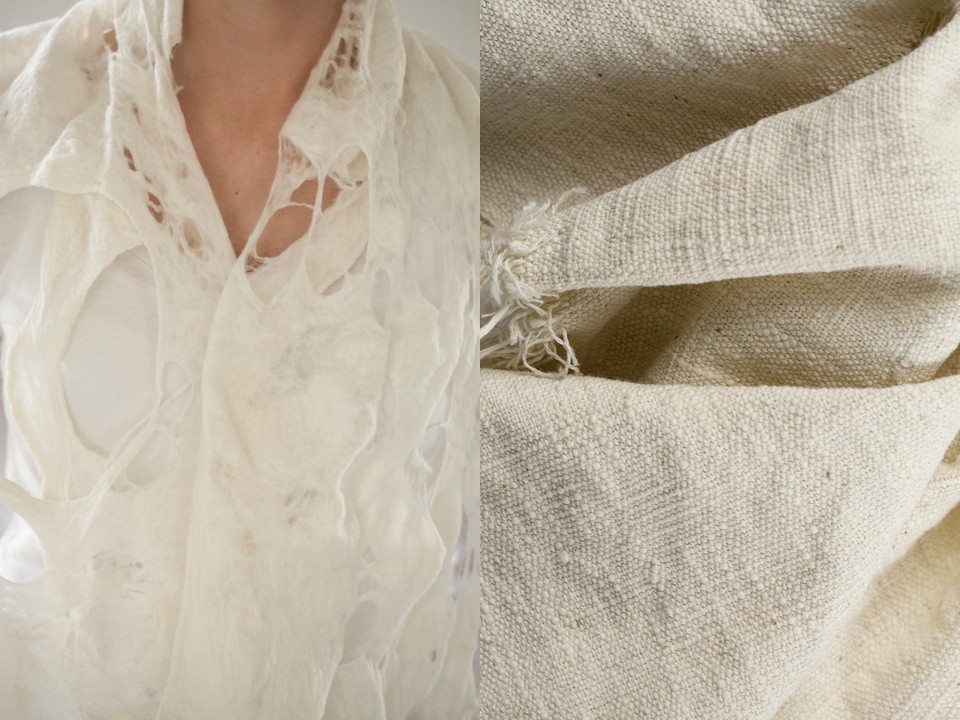
photos Imke Klee
wuyong - not useless
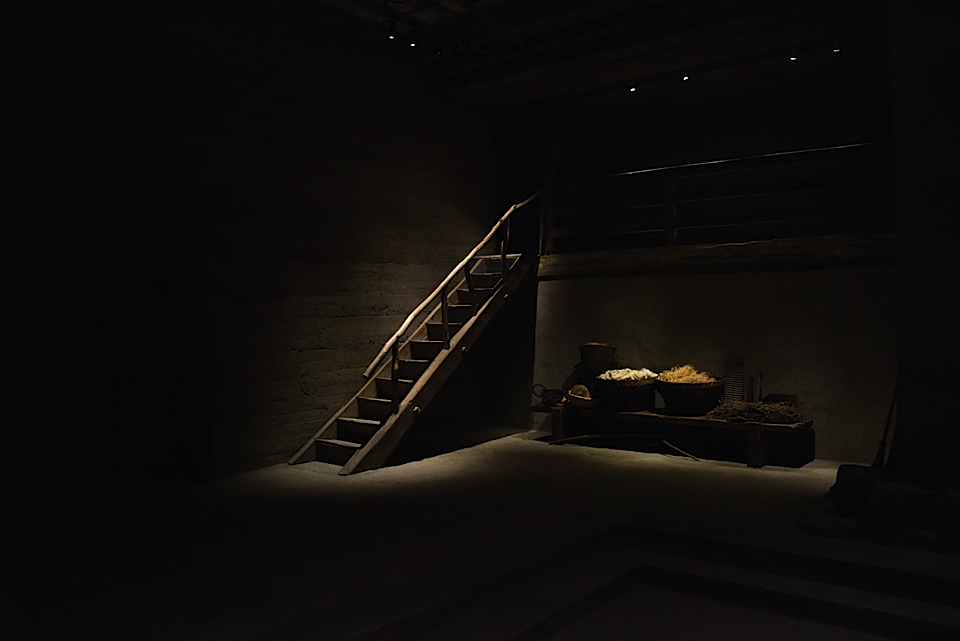
In a hidden corner of Beijing, a converted printing factory is now home to China’s most sophisticated retail concept: a living museum that literally has the ability to bring guests to tears with its beauty, connecting them to the power of the handmade. Poetically illustrating the store's name (meaning "useless"), Wuyong's staff explain that China is "experiencing a heartbreaking loss of craft and tradition but we don't think it's useless”. Here, the space's passionate founder Ma Ke kindly shares with Trend Tablet’s readers her inspiring manifesto on her relationship to clothing and being a designer.
It took me a decade - from the early 90s, when I was fresh out of school, until the year 2000 – to realize that the world has no shortage of fashion designers who are capable of making trendy, elegant, sexy and sophisticated garments, but that it is badly in need of simply clothes designers. My own definitions would set fashion and clothing greatly apart. It is a fact that, in the world of metropolitan shopping malls and high-end boutiques, there are plenty of beautiful garments whose very unpredictability make our life colourful, and compel a multitude of desires. You are almost convinced: you can buy whatever you dare to think.
As experience grew with age, my attraction to art had become ever stronger. The world of art revealed new spiritual prospects, a food for the heart and the sense of happiness that comes from catching sight of a friend from a past life. My journeys into the remote countryside, far away from urban life, carry me to deeper thoughts and explorations of the values of life. I am no longer satisfied by the practical and ornamental functions of clothing, nor breakthroughs in form, much less does the drive for reputation or profit enter into my work. I yearn strongly for clothing to stand as does paint to the painter, as does stone to the sculptor, as a simple and particular language of art, which draws the audience from an appreciation of the surface to deeper thoughts and conversations with the world of the soul. I have a strong desire to explore the mental life and spiritual world of human beings. And through the works of art that have touched me deeply, I believe that the most sublime and most meaningful creative motives should arise through caring for other people, the ultimate care of humanity—a concern for human feeling and spirituality. This includes love, but it is bigger than love, and it is unconditional. I believe the greatest works of art can touch the deepest and strongest parts of human feeling and the world of the spirit, and only these works can be the memories of history, preserving the most valuable feelings that have ever existed, and inspiring a greater awareness of ourselves.
I am not satisfied if people only appreciate clothing if it makes them happy, or visually appealing, or serves their needs. I believe clothing could be a specific creative language, and has infinite possibilities for communicating ideas and transmitting thoughts, for inspiring you and shaping your behaviour. I pursue spiritual values that are in complete opposition to today's fashion trends. In fact, it is the primitive eras of human history that attract me most, when people led a life of simplicity, with a respect for nature and a rudimentary understanding of things. Those anonymous crafts, born of daily life and without desire for fame or profit, still resonate through the millennia, and strike the modern mind. This is what I have pursued, for clothing to return to its original simplicity, and to replace our over-stimulated senses with more subtle sensibilities. Genuine fashion today should not follow the glamour of trends. It should instead uncover the extraordinary in the ordinary, for I believe that the ultimate luxury is not the price of the clothing, but its spirit.
Through the evolutionary stages of my thinking, I have concluded that the role of the designer should be the bearer of social responsibility, a seer of the trends in society, and an ethical leader. What age are we living in at present? After thousands of years of agricultural civilization, and a couple of hundred years of global industrialization which have exceeded the human output of all previous history, people now possess an over-abundance of things, and yet, in our super-commercialized world, have desires that are ever harder to satisfy. This is a world of the exceeding polarization of rich and poor, a world of conflict and never-ending wars. Now, in the 21st century, after 200 years of industrial over-development we have to face a deepening environmental crisis caused by short-sightedness and a radicalization of human activity, while the Internet has made the world smaller.
Our resources are running out, while our desires are proliferating. Cultural variety and regional diversity are being assimilated through economic globalisation. Traditional craftsmanship is disappearing from our daily life, and can now only be found in museum exhibits. Through these tremendous social changes, my country is undergoing a heart-breaking loss of tradition for the sake of an irresponsible pursuit of the future.
Faced with such a world, designers should no longer continue the pursuit of profit and efficiency, which characterized the industrial age. Einstein once said that to overcome a crisis is to stop thinking in the same means by which the crisis was caused. In the 21st century, the designer should not be showing off their personality and encouraging consumers to follow short-term trends. The crisis we are talking about is not regional or national. The environmental issues are only the symptom of an inner weakness that brings about such disasters. We cannot escape the consequences caused by our own short-sightedness, selfishness, greed and narrow-mindedness. The only positive result of the environmental crisis is to bring the whole world together, for the first time in the history, to resolve the problem together. Every one of us is an equal part of the solution, without exception. The crisis makes people aware that we are one, whether in a developed or developing country, whether rich or poor, whether in a big city or remote country. Designers, who are the creators of the living environment, must no longer isolate themselves and indulge in luxury and dreams. If you have ever seen the real world, you will realize the need for designers to take on new responsibilities. The age of individualism is coming to an end, while the age of commonality and mutual growth is beginning. This is a question of survival, and the transcendence of human nature.
As a designer, I conclude that I have the following responsibilities:
A- Ecological responsibility (the responsibility to the future) that a designer should think about the possible damage to the ecosystem caused by the production process, stop making environmentally unfriendly commodities, use natural resources frugally and make recyclable products for the benefit of long-term sustainable development.
B- Ethical responsibility (the responsibility to the present) means that a designer's sensibility and creativity should not only be used as a profession, but also as a social role to raise awareness. Designers should have their own attitude, rather than simply follow the tastes of consumers. They have the responsibility not to over-design, but to express properly, not to over-stimulate people's desire and promote blind consumption in the pursuit of profit. The most admirable quality in the social role of the designer is honesty. You should not you're your soul for fame or profit.
C- Responsibility to pass on cultural heritage (the responsibility to the past), as we are living in a world of the abundant wisdom of generations past which we should protect and pass on to future generations, instead of cutting off the tradition in our own time. Our cultural inheritance is not to be put in museums, but to interpenetrate our daily lives, to revitalize old traditions through living creativity.
Above all, my understanding of clothing and the designer's role comes from my exploration of the values of the world and human life, which has become my long-lasting creative drive. I truly believe this pursuit of the meaning of life and spiritual values has kept me going. To create, to me, is a long process of self-cultivation, not in view of a distant goal, but step-by-step. I am devoted to creating the most essential, the simplest living, while pursuing the richest spiritual life.
Ma Ke
www.wuyong.org
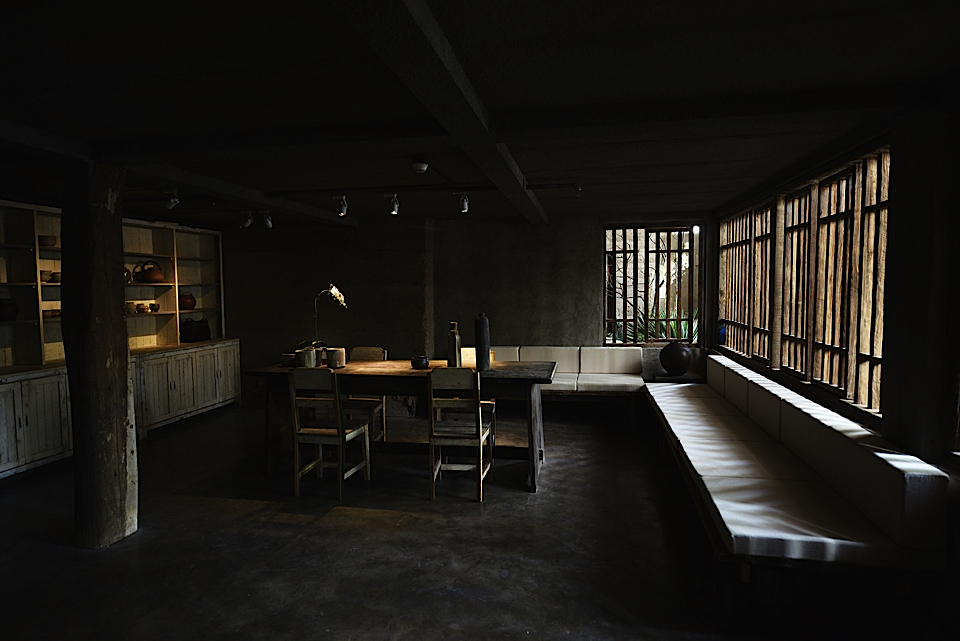

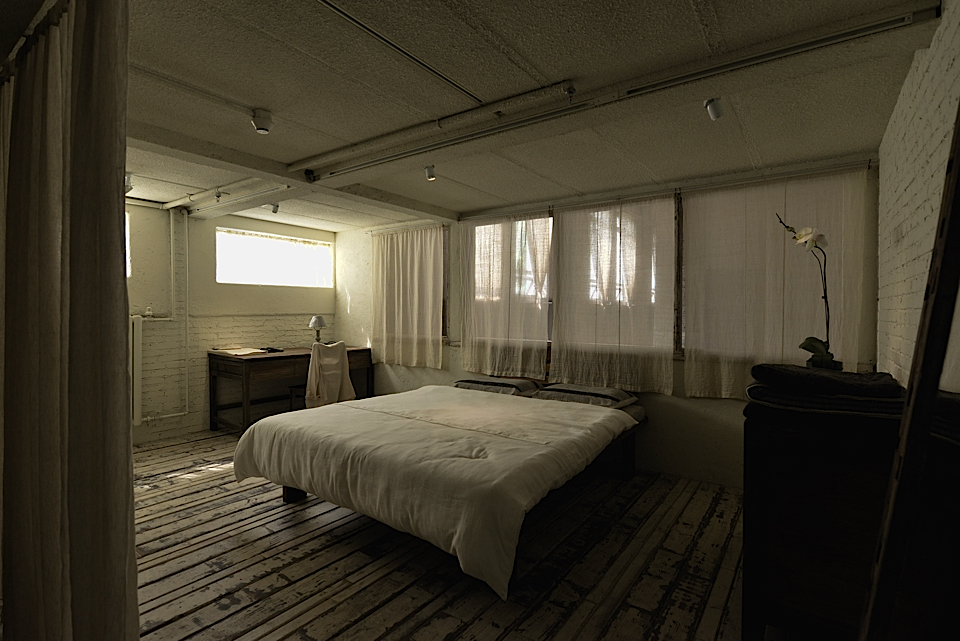
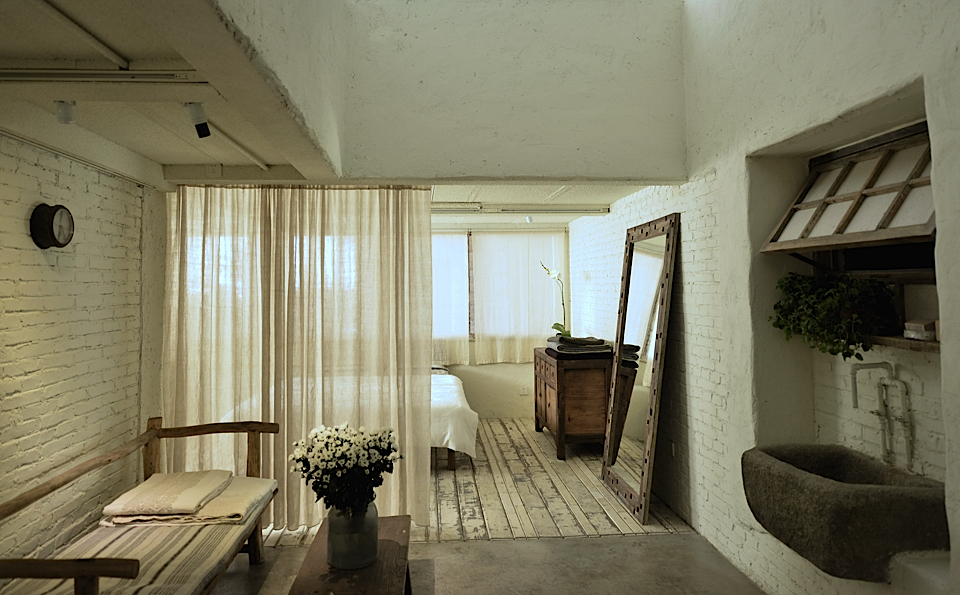
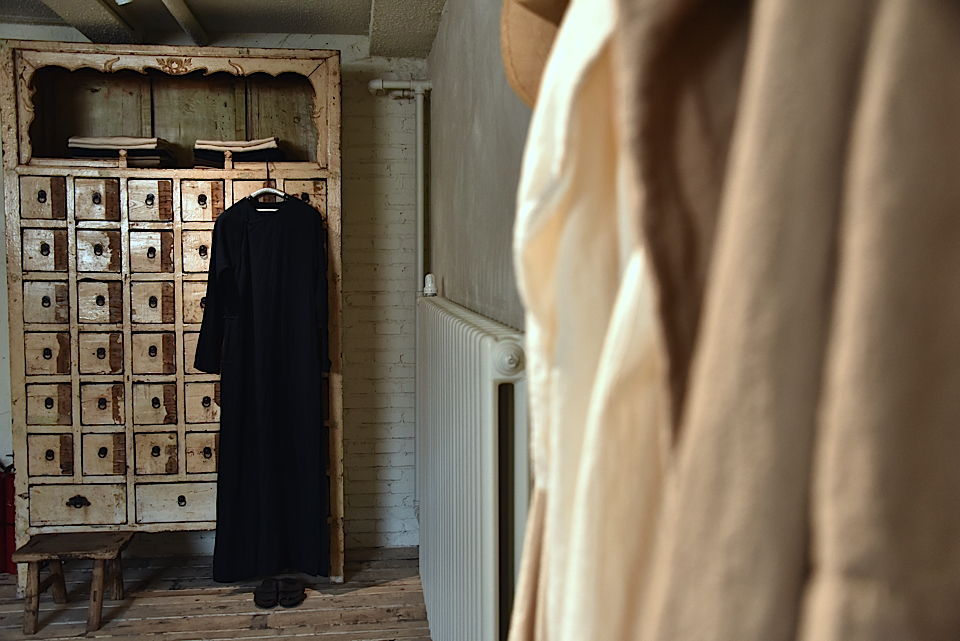
the manifesto
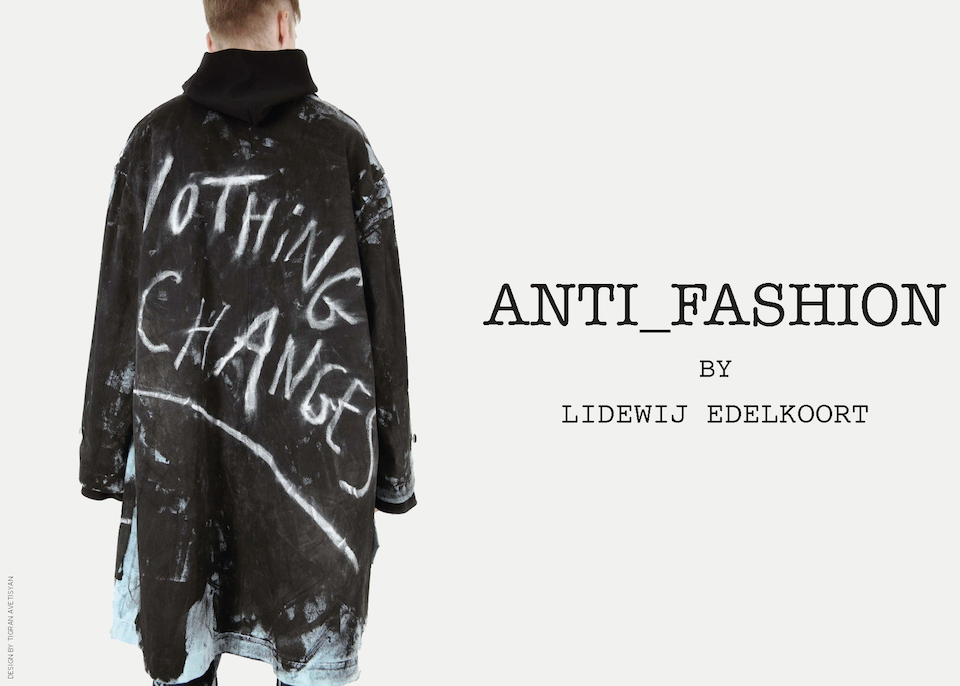
garment: Tigran Avetisyan
This much-talked-about and thought-provoking manifesto by the world’s most respected trend forecaster covers the 10 main issues that indicate the fashion industry has reached breaking point. Edelkoort courageously confronts marketing and advertising, as well as challenging education, materials, manufacturing, retailing, designers, fashion shows, the press and consumers alike. This means that the economy of clothes will take over from the turnover of fashion.
Therefore trend forecasting has changed as well, taking its leads from social change and finding creative ideas within lifestyle trends and consumer behavior. A break-through philosophy focusing on textiles, garment-making and the imminent revival of couture. It’s time to simply celebrate clothes!
€ 25 - including postage & handling. Edition of 1,000 copies - English.
Click here to order

